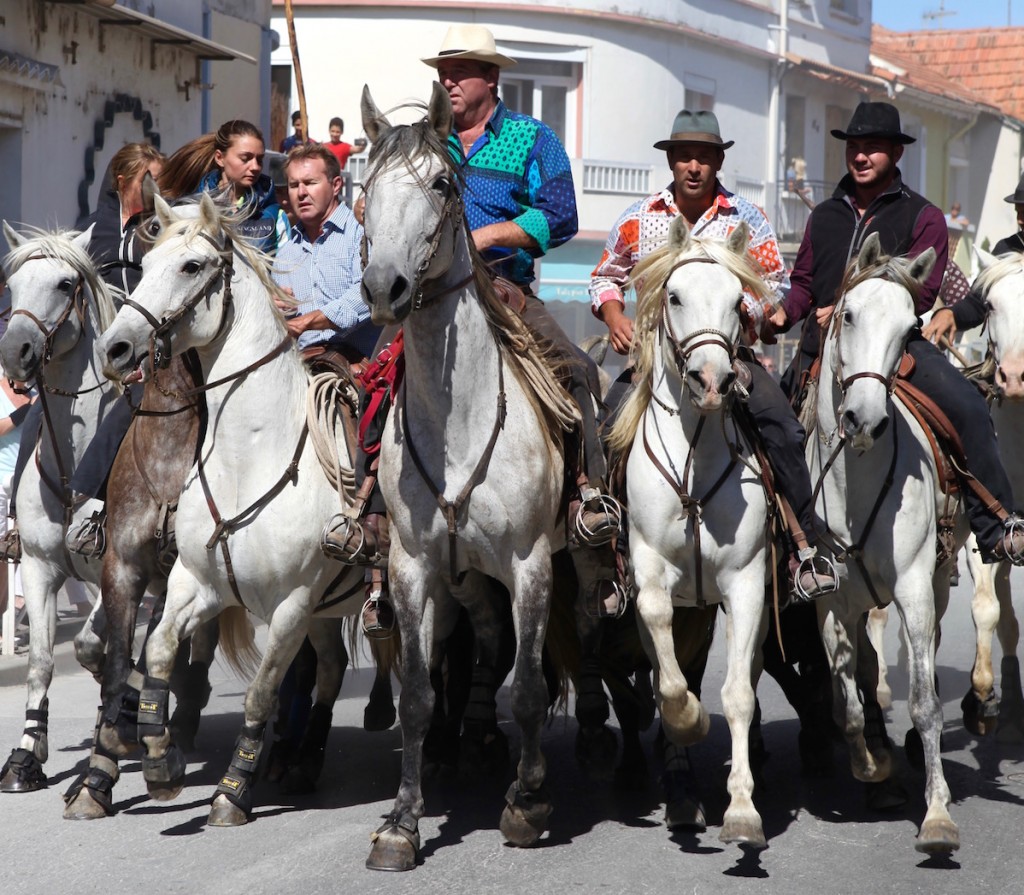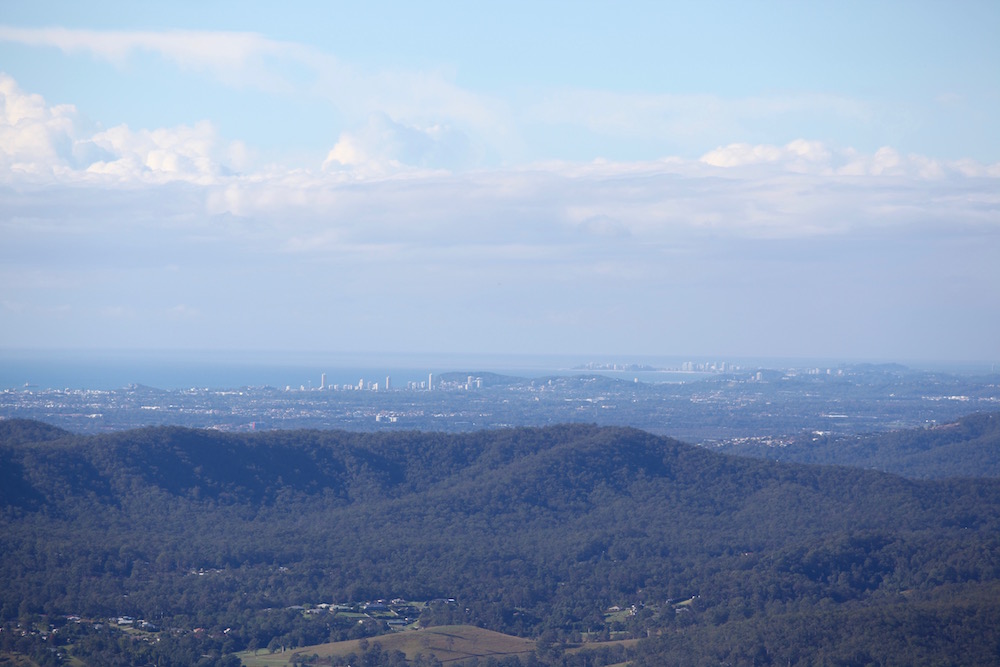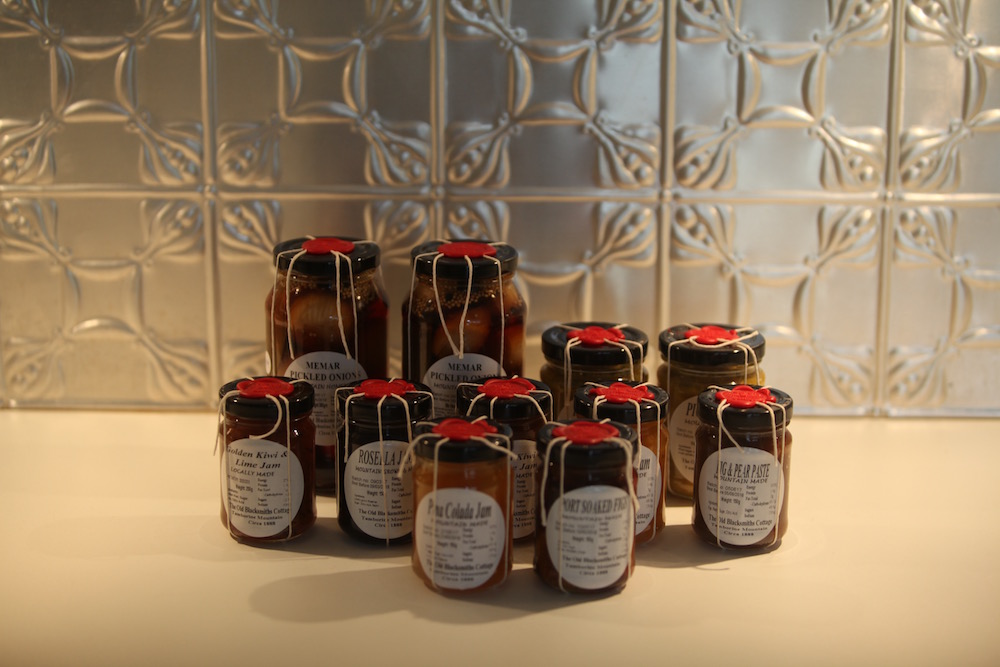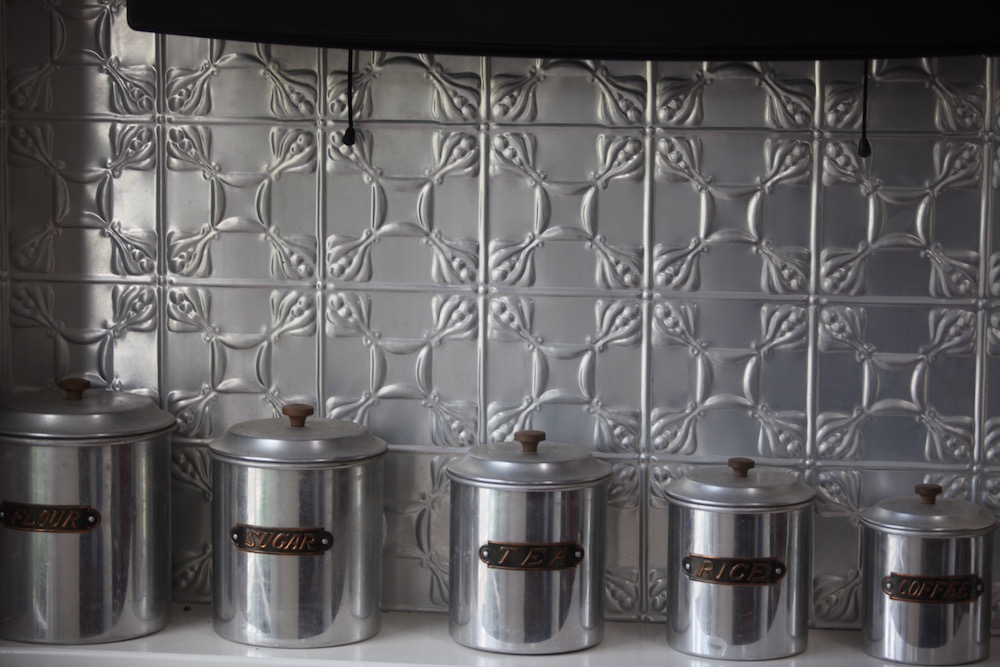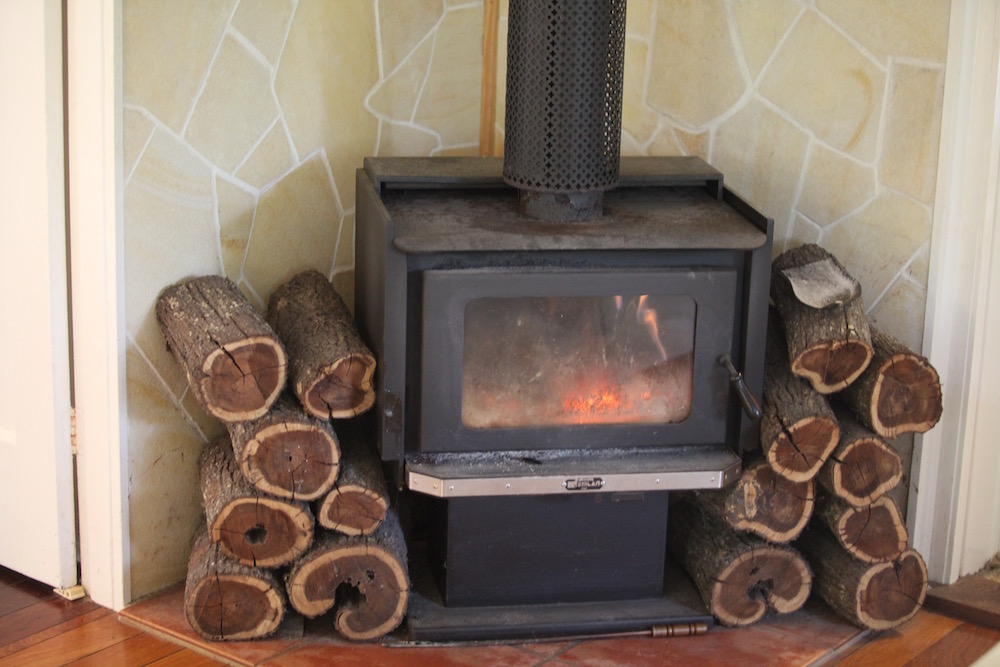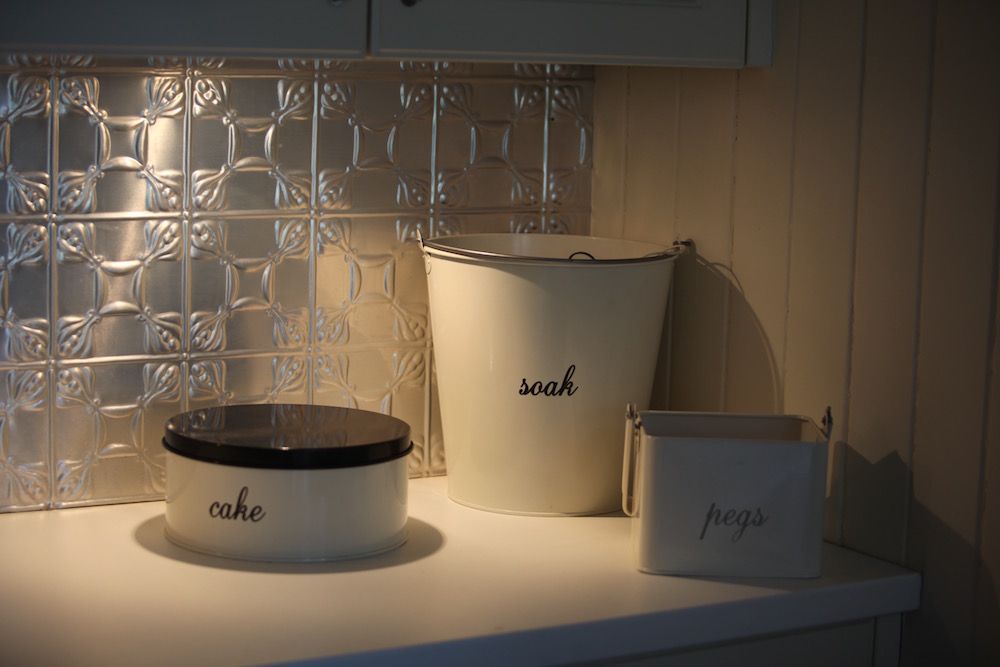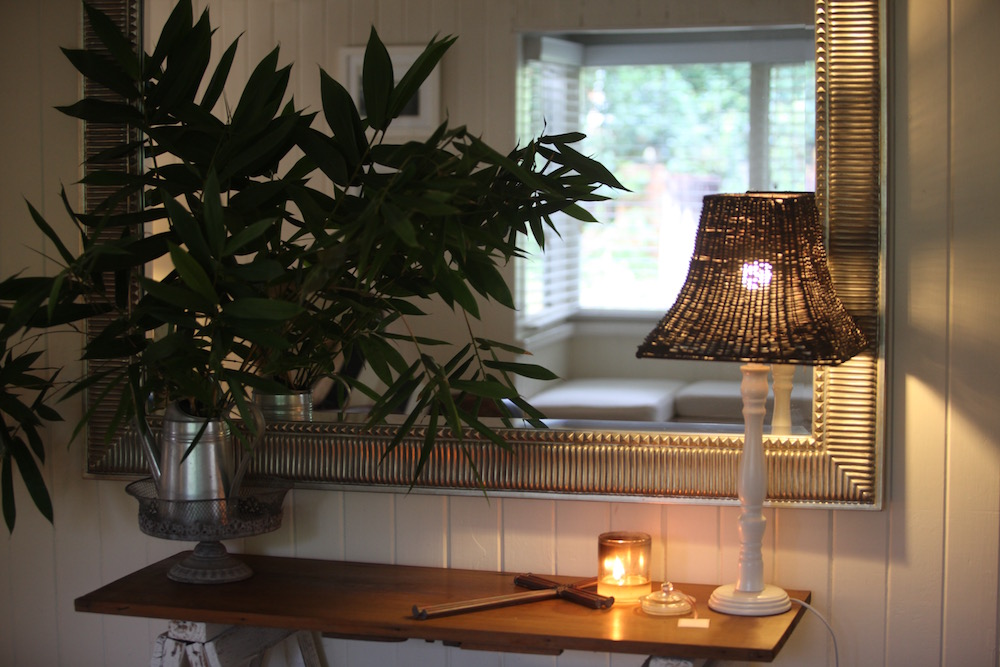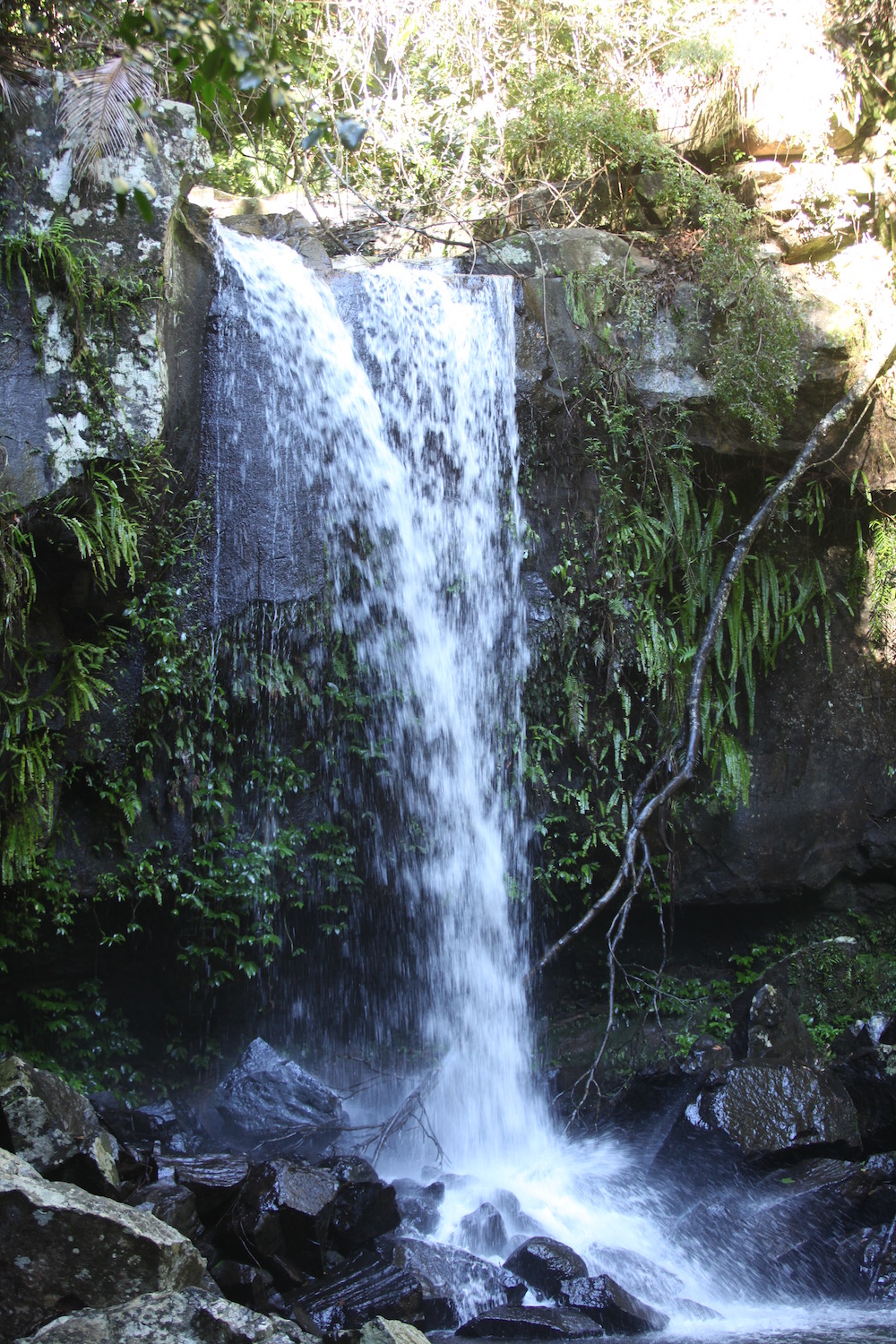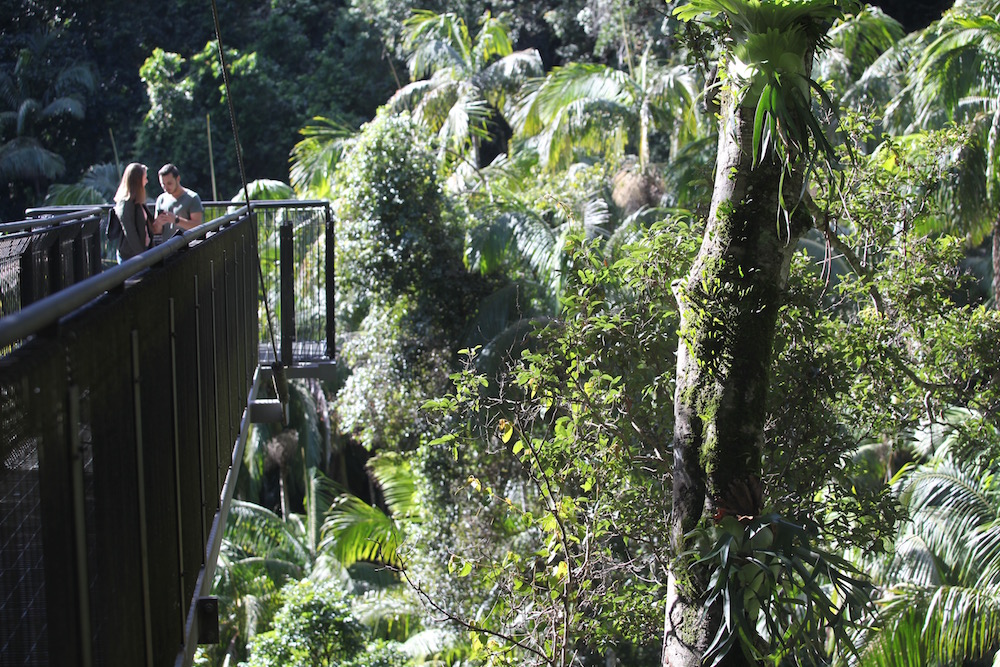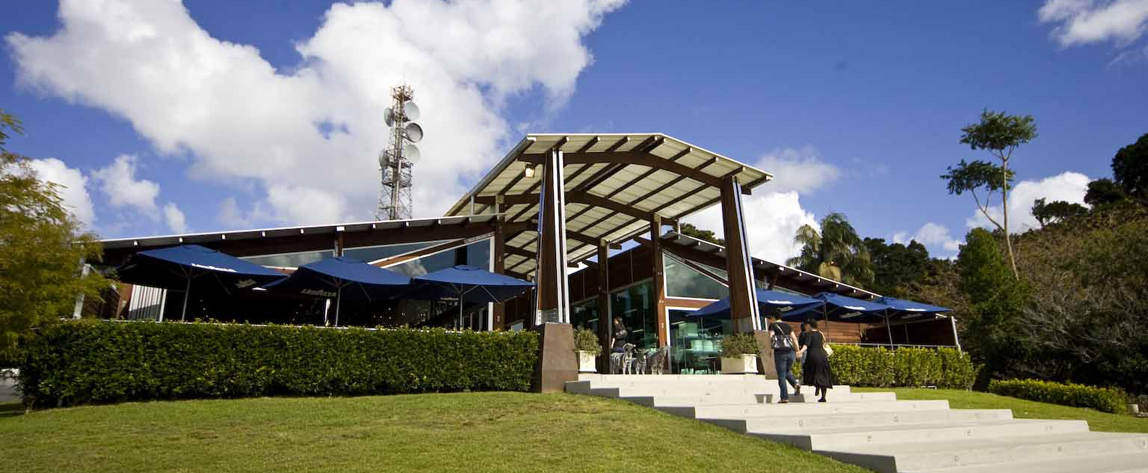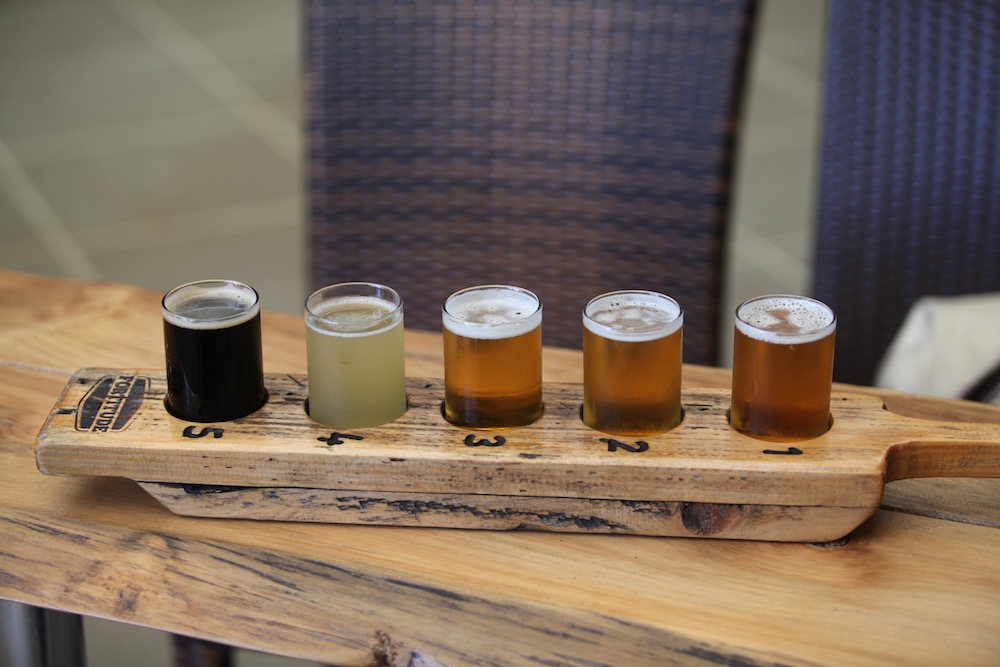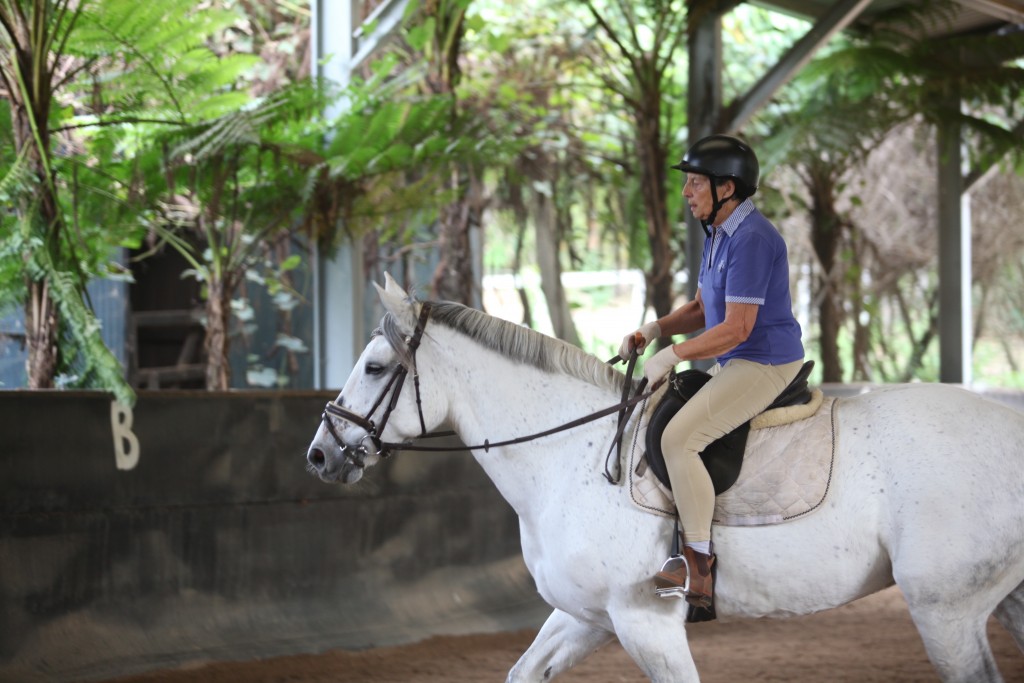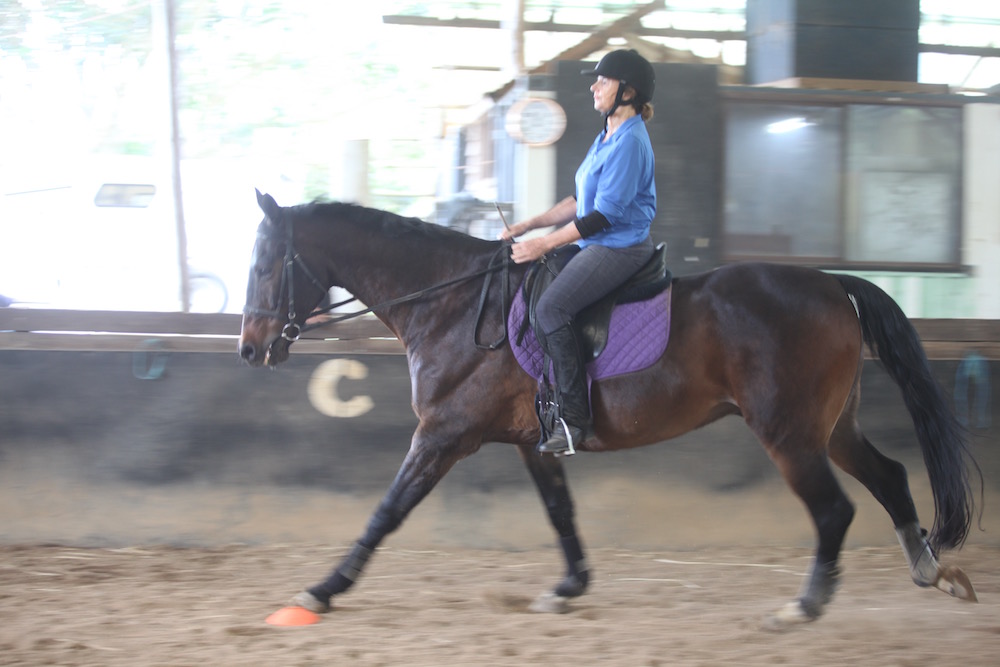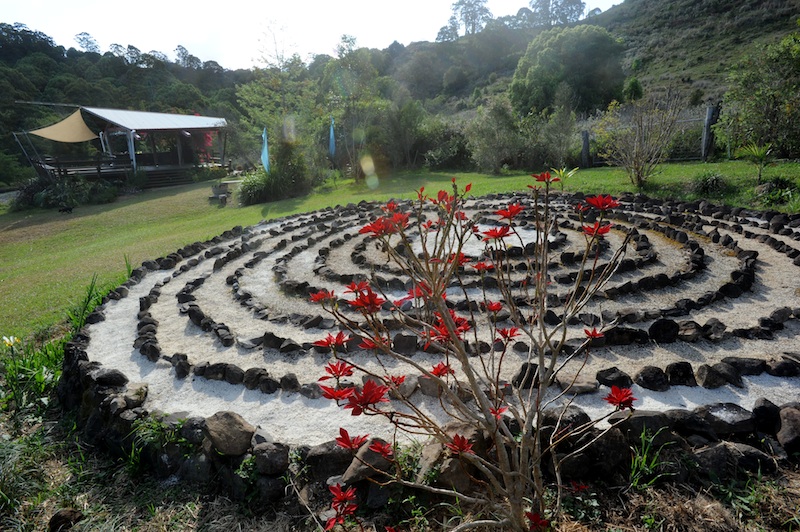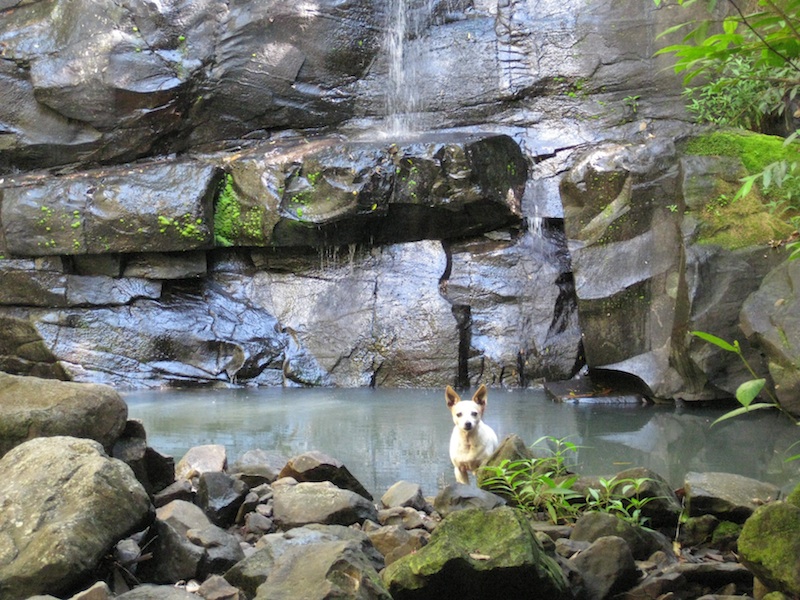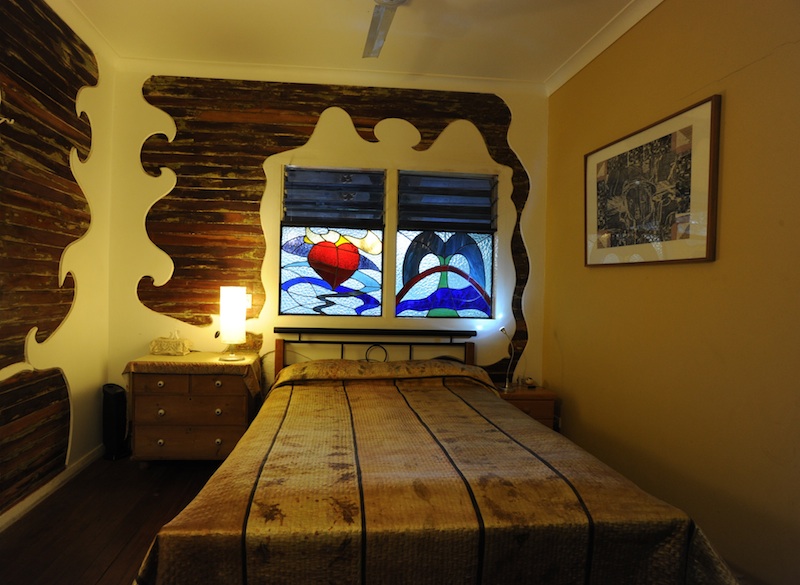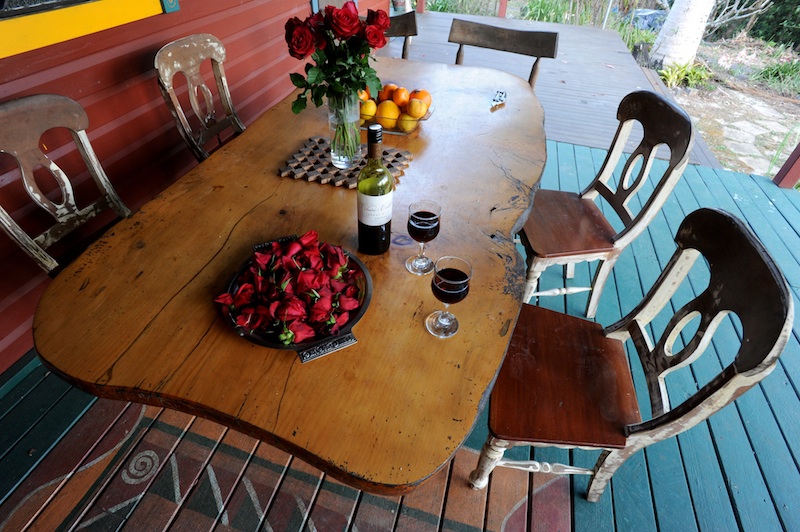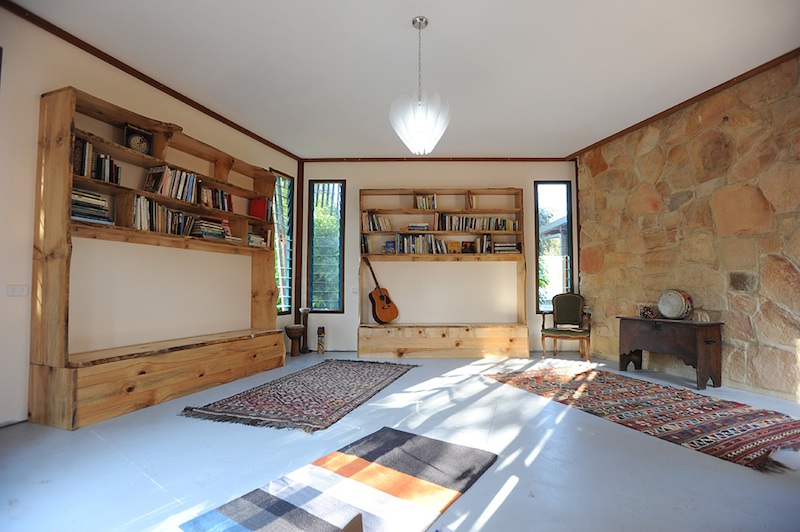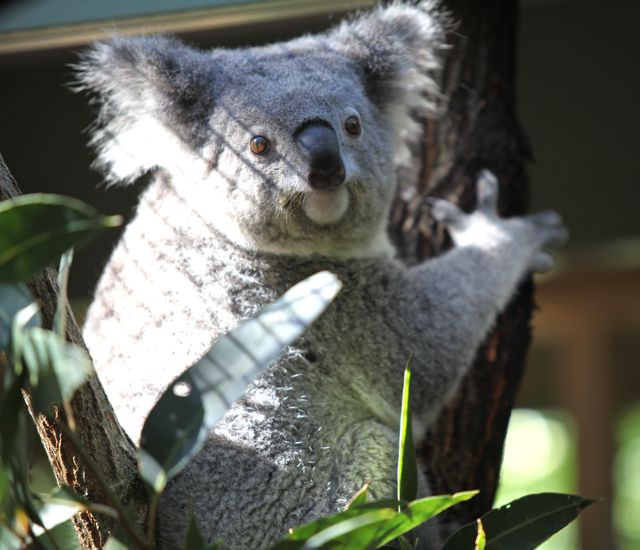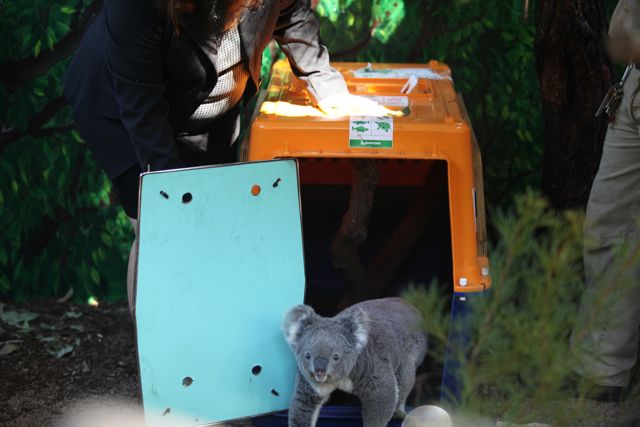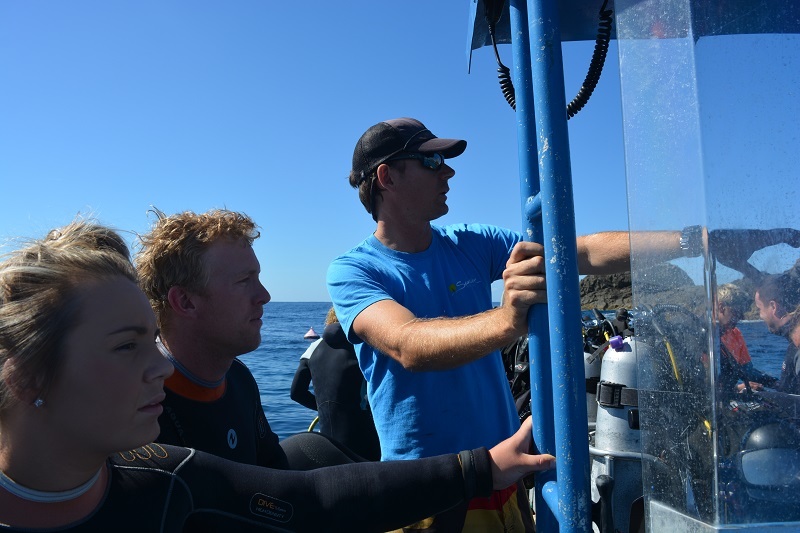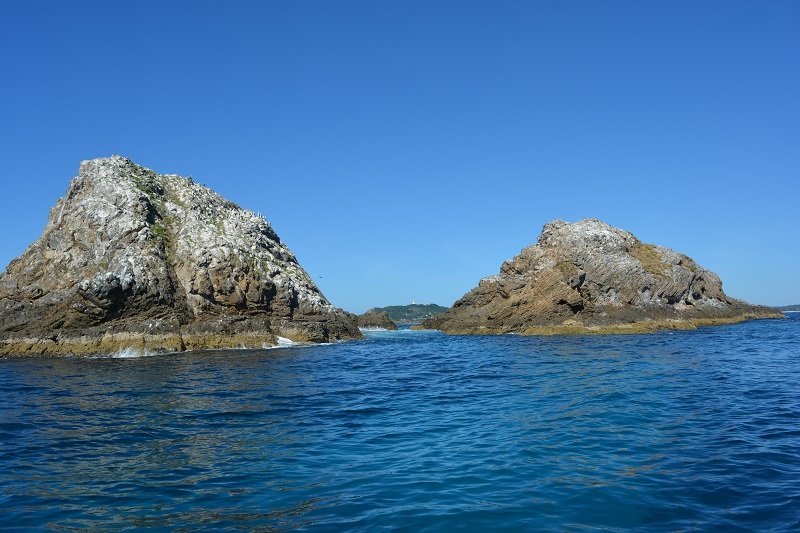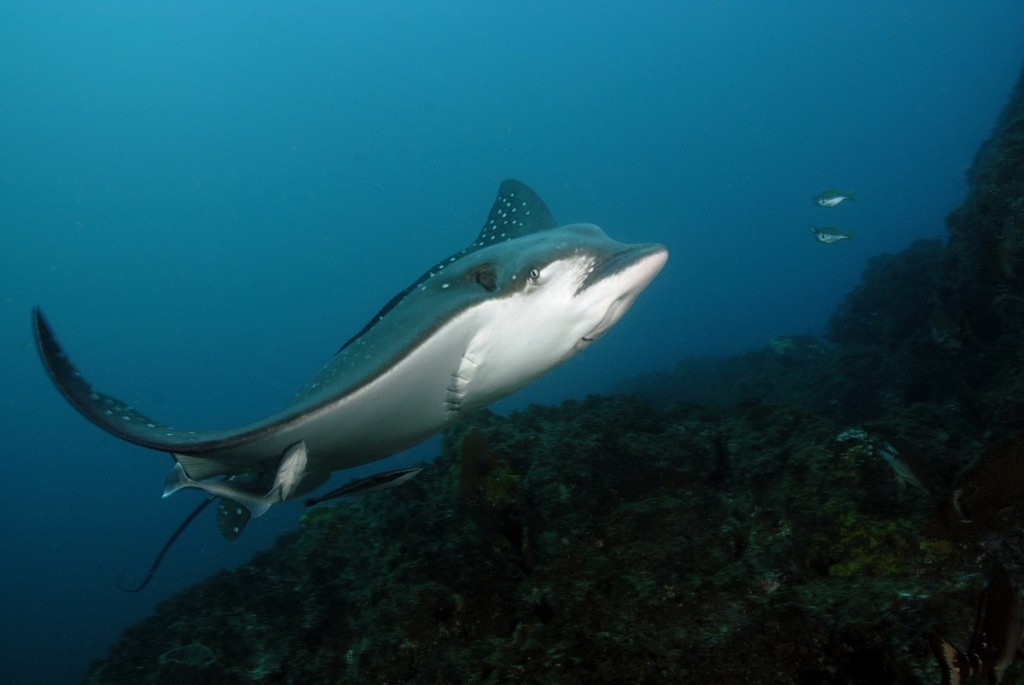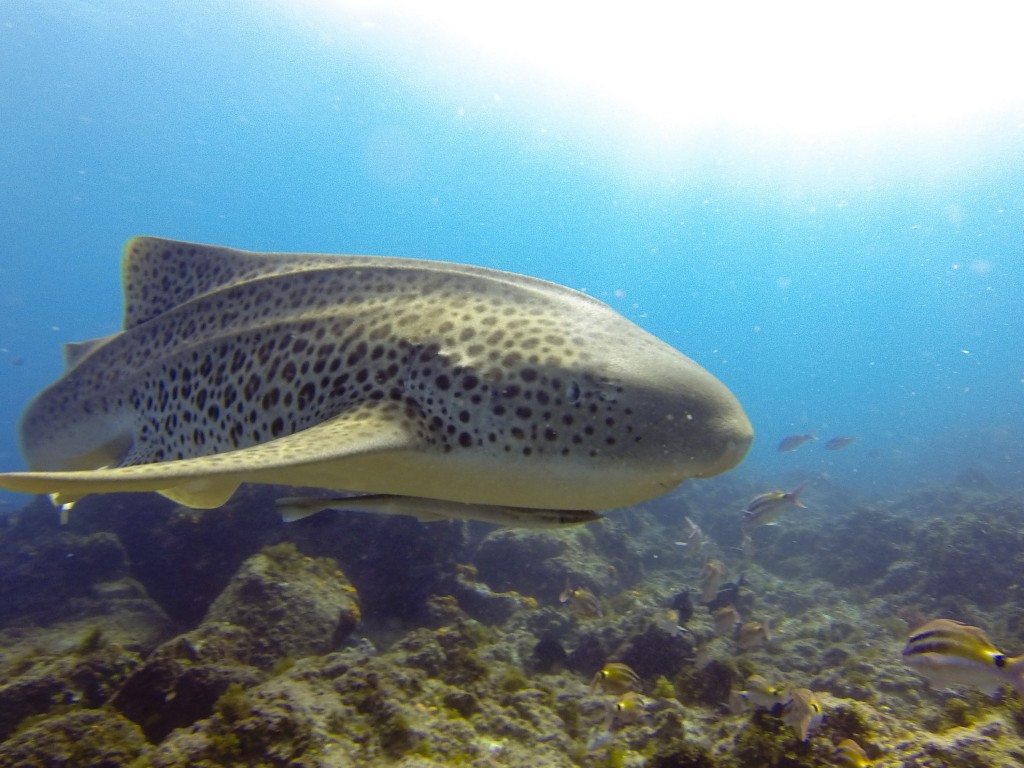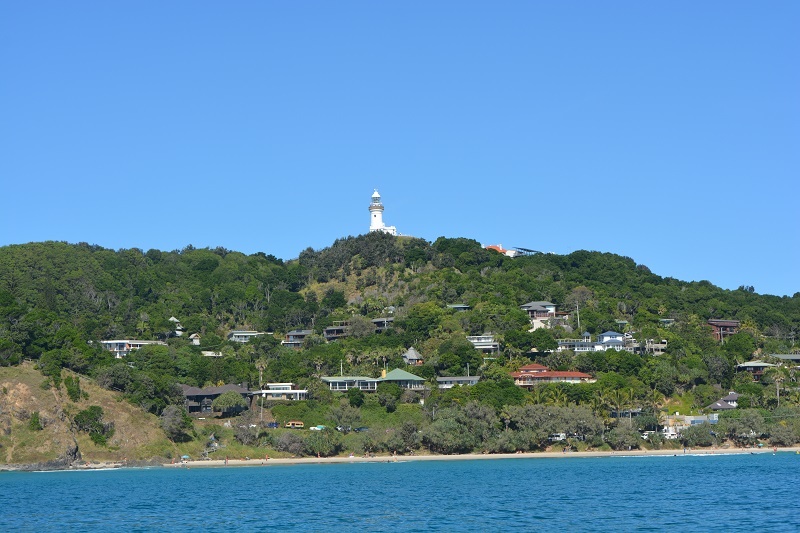The post Byron & Brunswick – they can put their hats on… appeared first on .
]]>Brunswick Heads Fleet has been awarded the title of top regional restaurant in NSW. The scores are in and the results are official – the Byron Shire is home to two of Australia’s top restaurants, with the recently released national Good Food Guide awarding both Brunswick Heads Fleet and Byron Bay’s The Byron at Byron Resort hat status.
The Byron at Byron Resort received one hat, while Fleet received two hats and was the highest scoring restaurant in regional NSW with 17.5/20
The Guide of independent, anonymous reviews is written by a panel of trusted restaurant critics and recognises the best Australian restaurants nationally with ‘hats’, symbolised by a chef’s toque. To secure a coveted spot in the Guide, restaurants in New South Wales and Victoria must score at least 14 out of 20, while all other states must score a minimum of 15.

Neil Perry says his best meal in 2018 was at Brunswick Heads Fleet restaurant which now has two hats.
To achieve a hat is a pinnacle of a chef’s career and a restaurant’s history, with the term ‘hatted’ becoming embedded in the Australian lexicon. More than 500 restaurants from across the country were reviewed for this year’s Guide, with 264 of these receiving hat status, ranging from one to three.
Only seven restaurants nationally achieved the top accolade of three hats, and they include Attica (VIC), Brae (VIC), Momofuku Seiobo (NSW), Minamishima (VIC), Quay (NSW), Restaurant Orana (SA) and Sixpenny (NSW).
The catalogue of influential Guide editors includes founding editors Claude Forell in Melbourne and Leo Schofield in Sydney – along with Terry Durack, Jill Dupleix and Matthew Evans – all of whom have helped shape and chart the growth of the restaurant industry in Australia.
It is this rich 39-year tradition that the 2019 Good Food Guide editor Myffy Rigby upholds, ensuring the Guide remains Australia’s pre-eminent restaurant bible.
“The Good Food Guide is a reflection of the thousands of voices that make Australia one of the most diverse and delicious places to eat in the world,” says Rigby. “The Guide is a celebration of the industry as a whole. Every one of the restaurants featured is a summation of all those moving parts. We recognise the hard work of all those Australian restaurants and everything they do to enrich the scene.”
The Good Food Guide is the perfect Christmas present for those that love to travel and eat!
The national Good Food Guide 2019 is out now and retailing for $29.99.in newsagents and online at: www.thestore.com.au/goodfood
The post Byron & Brunswick – they can put their hats on… appeared first on .
]]>The post Her Island Home – Janet De Neefe on the Spice(s) of Bali Life appeared first on .
]]>Janet De Neefe is pounding fresh spices in a mortar and pestle in her kitchen in Ubud, Bali. There’s candelnuts, and coriander seeds, black peppercorns, red shallots, garlic, chillies, lemongrass stalks, galangal, fresh turmeric, lime leaves and palm sugar.
The aromas have my tastebuds on fire.
The Melbourne ex-pat is about to make one of her favourite Indonesian dishes – a mouth-watering golden kare ayam (chicken curry) as well as an assortment of other spicy and fragrant side dishes.
On the other side of Janet’s kitchen bench, and looking somewhat out-of-place, is a large jar of Vegemite – a reminder of Australia and her home for the first 25 years of her life.
“Vegemite reminds me of home – of course – and I love it on toast for breakfast,” Janet says, “but it’s the exotic Indonesian cuisine that’s captured my heart.”
From the moment the Melbourne teenager stepped off a plane in Bali in 1975 she was fascinated with the food and culture of The Island of the Gods. “I was besotted with the mouth-watering cuisine. It was just so different to what we were used to in Australia,” she says.
Janet returned to Bali in 1984, and on only the second day of her holiday, she met her future husband, Ketut Suadarna. One chapter of her life closed and another opened and five years later the couple were married. Over the next 30 years, and with no formal culinary training, Janet (with the help of Ketut and her family) has built a food ’empire’ in Ubud of which many successful restauranteurs would be envious.
In 1987, and after learning as much as she could about Indonesian food from her sister-in-law, the couple opened their first restaurant – Lilies – in the famed Monkey Forest Road. In 1990 they established the Honeymoon Bakery and Guesthouse and in subsequent years Janet and Ketut opened two more restaurants – Casa Luna and Indus – as well as the Honeymoon Kitchen which operates from their guesthouse.
There’s also the popular Casa Luna Cooking School that attracts tourists from around the world keen to learn about Indonesian cuisine; the highly successful Ubud Food Festival which Janet started in 2015 and more recently, the exotic Spice Island Cruises.
Janet and Ketut also own a homewares store – Casa Luna Emporium – and in 2002 Janet started the Ubud Readers and Writers Festival as a way to draw tourists back to the island following the Bali bombings.
And if that’s not enough on their plate, the couple also have four children – Dewi 27, Krishna 25, Laksmi 22 and Arjuna 20.

FAMILY AFFAIR: Janet De Neefe, her husband Ketut Suadarna and children (from left) Krishna, Dewi, Laksmi and Arjuna at a recent ceremony in their Ubud home.
“I’m crazy about Indonesian food, which I feel is totally underrated,” Janet says. “I want to put a spotlight on this exotic spicy cuisine, which I describe as the ‘Italian food of the east’. It nourishes you from the inside out and is very medicinal. We don’t used canned or processed food and all our spice pastes are made from scratch with fresh ingredients sourced daily from the local markets. At the moment I’m crazy about jackfruit curry, I love smoked duck and my passion is baking sourdough bread with a host of different and unusual ingredients.”
Janet’s baking obsession has led her to invite sourdough ‘guru’ Chad Robertson from San Francisco to attend next year’s Food Festival, which will be held on April 26, 27 and 28.
Since its inception four years ago, the festival has grown into south/east Asia’s leading culinary event, showcasing Indonesia’s diverse cuisines, extraordinary local produce and shining a spotlight on culinary heroes – both new and established.
From the opening night party to the final mouthful, this year’s event held in April and presented by ABC was enjoyed by more than 12,000 hungry foodies – a 30 percent increase on last year’s attendance.
“The festival has seen enormous success and even though it’s mainly an Indonesian audience, it’s also attracting lots of westerners as well,” Janet says.
Janet’s latest food adventure, her famed Spice Island Cruises focuses on a small, but lucky group of foodies and adventurers who set sail on the high seas on an old-fashioned teak Indonesian pirate ship across stunningly clear tropical seas from Ambon to Banda Neira. Banda Neira lies in the middle of 10 small, sun-drenched volcanic islands scattered in the wind-swept Banda Seas, 200km from Ambon. “To arrive by water makes it nothing short of magical,” says Janet.
From snorkelling and diving in pristine waters full of some of the world’s most diverse marine life, to onboard cooking demonstrations led by Janet, to visiting the famous Run Islands which were home to the best nutmeg plantations in the world in the 16th Century, passengers are taken on an odyssey to a part of the world that still remains largely untouched. (The next cruise, by the way, is scheduled for November.)
So what’s next for Janet De Neefe?
Well, there’s cooking tours to the Komodo Islands and other eastern regions of Indonesia, and knowing this indomitable woman, probably a few other secret plans as well.
With such a hectic schedule, how does she find the energy to keep going?
“Daily yoga and the gym keep me physically fit, food nourishes my body and the spiritual side of Bali keeps me grounded and centred,” she says, before she shares one more secret: “Oh and a glass or two of wine is always a good idea.”
The post Her Island Home – Janet De Neefe on the Spice(s) of Bali Life appeared first on .
]]>The post A splash of love, a pinch of luck and it’s all molto bene for Ian Smith appeared first on .
]]>My first memory of anything related to cooking was measuring flour at South Wagga Primary School. I was photographed doing this for a local newspaper story on education. Sixty-three years have passed since then.
I’m not a chef, but I’m lured by the joys of cooking. These days, wherever I travel, I tend to seek out local cuisine cooking schools. I’ve taken classes in France, Vietnam, Thailand, India, Laos, Malaysia, and Italy. In truth, my interest and motivation to explore different cuisines was accelerated by my wife’s appreciation of cooking, as well as her present to me for my 60th birthday. She gave me a four-hour cooking lesson with French Provincial chef Bruno Puget, who at that time had a restaurant, La Table, in Mullumbimby.
But this story is about a chance opportunity that tops my list in travel cooking experiences. I’ve recently spent a wonderful couple of days cooking for the second time at the Saportita Toscana Cooking School alongside its master chef, Sandra Lotte.
The main ingredients of the story are:
- A house-swap with an Italian couple who had a home in Umbria.
- A restaurant in the town of Foligno in Umbria.
- Coles supermarket in Ocean Shores, New South Wales.
- A brand of tinned Italian tomatoes called Mutti Polpa.
Three years ago, during a house swap in the tiny walled village of Spello in Umbria, our Italian friends arranged for me to help out in the kitchen of a classy Italian restaurant, owned by a Michelin Star chef, Marco Gubiotti. I didn’t care what jobs they gave me.
It wasn’t easy because I didn’t speak Italian, but luckily there was a sous chef who did speak English. Marco, thankfully, was impressed with my knife skills. Gradually, over six weeks, I progressed to preparing various dishes, including the Porchetta, Scaloppini, tossing pasta, boning the salmon and, finally, the signature dish – an Umbrian-style Parmigiana, Melanzane (Parmesan Eggplant). This was full of flavour, requiring a rich Neapolitan tomato sauce to hold the other elements, Buffalo Mozzarella, Parmesan cheese, basil and, of course, the eggplant.
I fell in love with Italy. During our stay we took many day trips, as you do, to local wineries, walled cities, ancient ruins, cathedrals, concerts, and to wonderful eateries, bars and fine dining establishments. But the wonderful flavours – Sagrantino and Barbera wines, truffles and porcini mushrooms – became a distance memory on returning to our home in Ocean Shores.
To bring home the memories, I decided to cook the restaurant’s signature dish. And, behold, it was not as good. I knew it was the ingredients, not me. Then, one day walking down the aisles of our local Coles supermarket, I saw Mutti Polpa canned Italian tomatoes. The label promised the tomatoes were ‘90 minutes from vine to can’, so I decided to try them in the dish. My second effort using these tomatoes yielded the flavour. Everyone who tasted the dish loved it.
I was about to discard the can’s packaging when I read on the cardboard wrapper ‘Win a Trip to Italy’. I decided to take up their challenge to explain how I felt when I first tasted Mutti Polpa tomatoes. Being a wannabe guitarist in the (completely unknown) No Direction garage band, I set about expressing my feelings in song, writing, playing and singing a jingle which I recorded on 30-second video, backed by images. I entered along with 1,800 other aspirants, only to be told by my wife, Jane, ‘You’re wasting your time. The garden needs weeding’.
The phone call came from the marketing manager of Mutti Polpa who said those wondrous words: ‘Congratulations, Ian. You and you partner are off to Italy’. Wow! Two weeks in Italy, including one week live-in at the Saporita Toscana Cooking School, all-expenses paid, including airfares. I think Jane was more excited than I was, as she began turning the two weeks into a seven-week tour of Europe. However, once the news started to sink in I was truly humbled by the opportunity to go back to Italy. It was almost like I was going home.
After a little sojourn on the Amalfi coast, we arrived at La Casa Rossa Agriturismo where the Saporita Toscana Cooking School was located. Jane had absolutely no interest in cooking and was looking forward only to the other weeks on our itinerary. But, as we pulled up outside La Casa Rossa, we saw a sign that changed everything. The agriturismo was attached to an equestrian centre. ‘Well, I know what I’m doing,’ Jane exclaimed. When I explained that Jane had decided to ride horses instead of cooking, the chef and owner, Sandra Lotte, upgraded me to the advanced course.

Ian Smith (far left) with the CIA – that’s the Culinary Institute of America – interns and Sandra Lotte.
What a week! Truly amazing, fun-filled and action-packed. So many new cooking skills! Boning chicken, the sauces, the baking, the olive oil appreciation, truffle hunting, knife skills, wine appreciation, roasting, braising, and dish presentation… ahhh…and the deserts, demonstrated by a guest Italian chef, Mimmo Costanaza, known as the King of Deserts. I thought I could make pasta until Sandra showed me the traditional way to do it. I was part of a family of 16 students, cooking three meals every day, supported by five interns from the Culinary Institute of America (the other CIA). Such a memorable and rewarding life-changing experience! Had I known how good this was I would have paid for the weeks live in course myself.
Back home, cooking calorie-laden Italian food for my wife and friends, I decided last year to do my weight-conscious wife a favour and apply my skills to the Michael Mosely 5:2 eating philosophy. I created lower calorie versions of classic dishes which I call My5:2 Cook4Jane. It has a Facebook page, facebook.com/loweringcals/
This year we went back to Italy, following an invitation from a close friend to cater for her wedding in Wales. As it was our tenth wedding anniversary, I secretly planned to extend the trip to surprise Jane. I shared my plan with Sandra Lotte who immediately responded, ‘I want you in my kitchen cooking’.
The banquet for 60 people in Wales was a roaring success, according to guests at the reception. And back ‘home’ in Italy, I had the honour this time of teaching a new batch of students how to prepare Parmigiana Melanzane, the Umbrian way, in a Tuscan cooking school.
I ask myself whether my motivation, culinary creativity, experimentation, management and enjoyment of cooking are innate or learned. Is it by chance that I won the competition, or was it meant to be?
There’s one ingredient I didn’t mention, which I think adds to this story and may, in part, answer my own question. My great grandfather, Angelo Korf Tornahgi, was born in Milan. He was an instrument maker who came to Australia at the request of the Sydney Observatory to help build the telescope. Eventually he was commissioned to build the Martin Street tower clock in Sydney along with the clocks on Paddington Town Hall, Lismore Town Hall and many other clocks in New South Wales. He became the Lord Mayor of Hunters Hill and won the Kings medal for his contribution outside Italy.
Boun Apitito.
Here’s the link to my winning 30-second video for the Mutti Polpa Competition: https://youtu.be/IvCSKiP5rW0
When Ian isn’t gadding about the world, he resides in Ocean Shores, where he is equally passionate about his other pasttime – golf.
The post A splash of love, a pinch of luck and it’s all molto bene for Ian Smith appeared first on .
]]>The post The Past and the Present at the Lascaux Caves appeared first on .
]]>After a month in France in September, my very last ‘horse’ adventure was at the ancient Lascaux Caves in Montignac. I’d seen these magical caves on endless documentaries, and I’d always wanted to see them in person – and to continue learning about the relationship between horses and humans. The cave paintings – and you will have all seen the images I’m sure – are from 17-20,000 years ago, and feature a wide variety of animals that are recognisable today – including aurochs, bison, reindeer and horses – lots and lots of horses!
The caves (other than one original at Rouffignac which you visit in a train, passing ancient bear nests on the way) are exact copies of the originals and in the case of Lascaux 2, which was the one we chose to visit, only 100 metres from the real cave’s entrance. The caves had to be copied because unfortunately the amount of people going through them once they were discovered caused almost immediate damage to the paintings. The copy itself took seven years to complete, and the sites are incorporated into the World Heritage list.
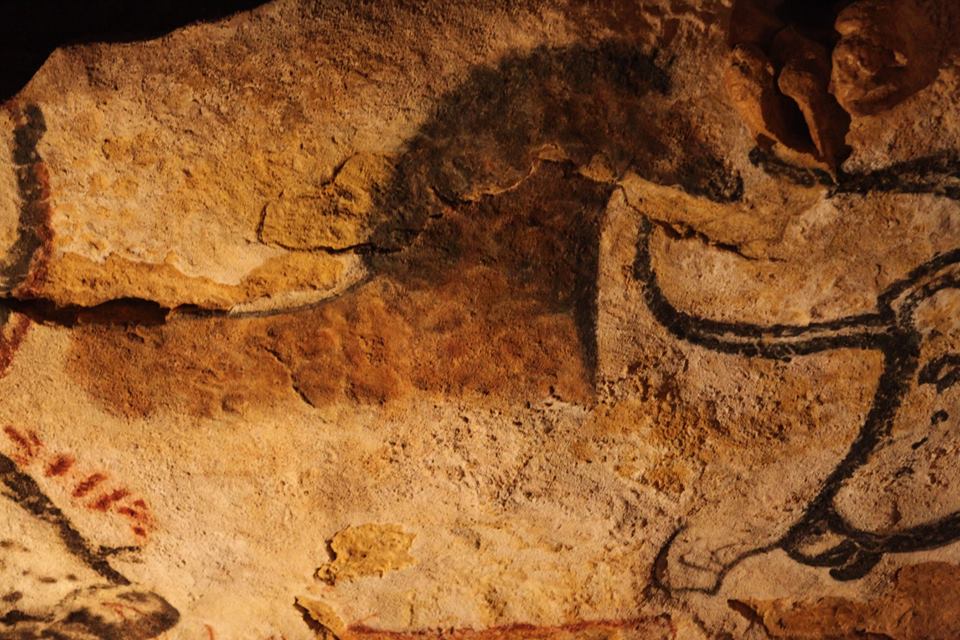
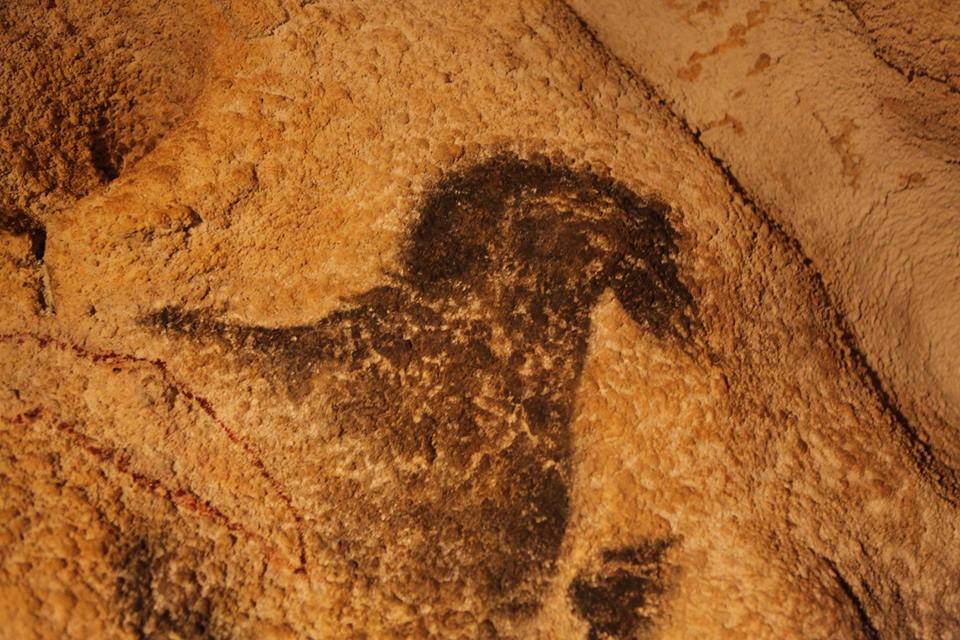
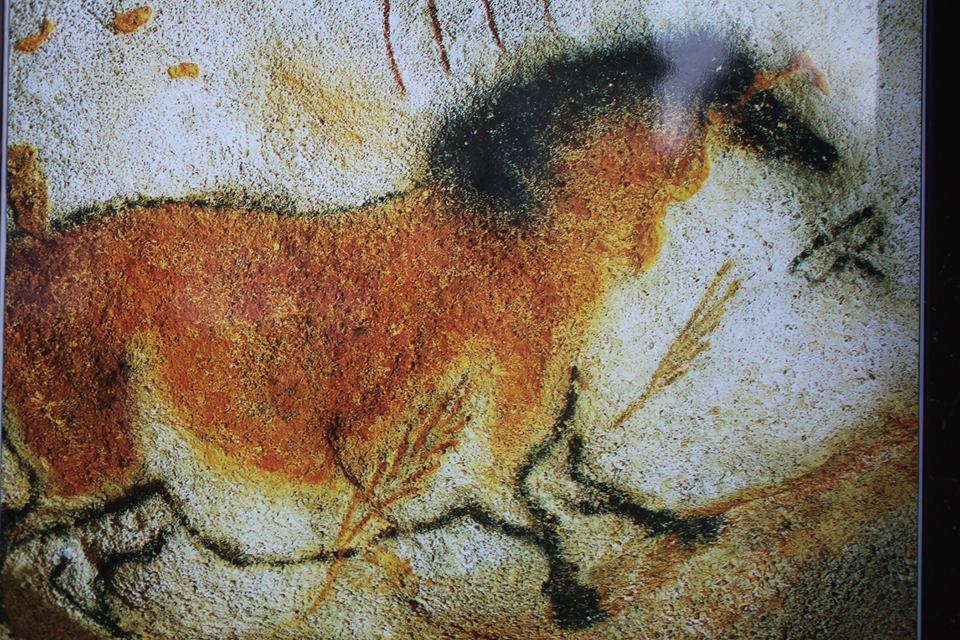
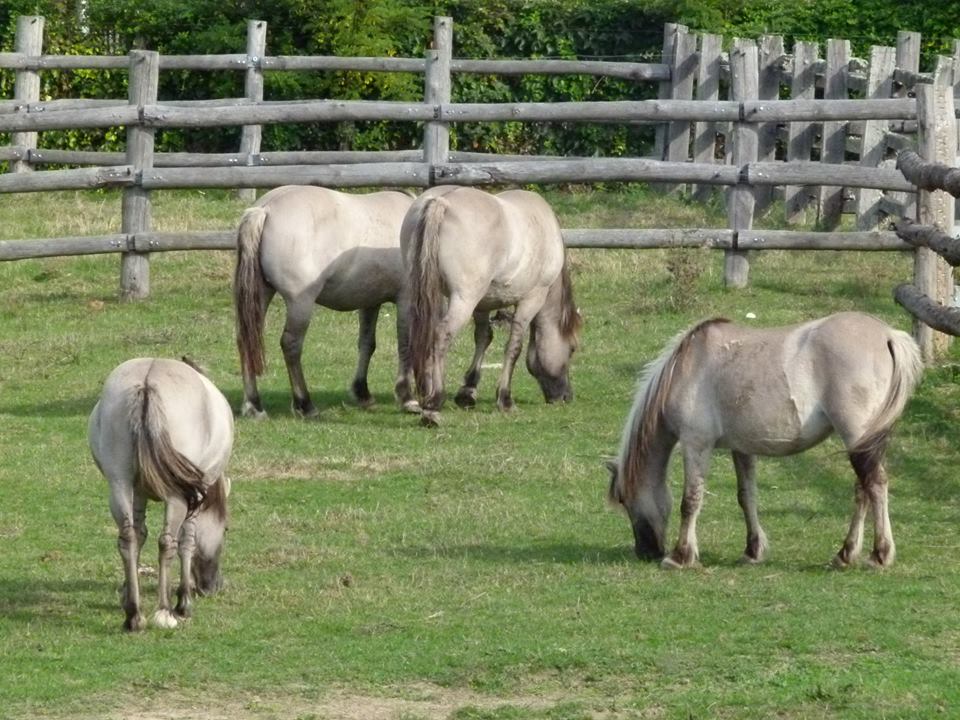 .
.I can’t even begin to describe the feeling of being surrounded by these wonderful images of horses – and the energy in the paintings. But THEN – even better, we visited a wild-life park nearby where they have a Przewalski’s horse – or Dzungarian horse, a rare and endangered subspecies of wild horse (Equus ferus) native to the steppes of central Asia.
It was extinct in the wild but thanks to a careful breeding program it has no been reintroduced to Mongolia. Most “wild” horses today, such as the American mustang or our own https://www.viagrabelgiquefr.com/ brumby, are actually feral horses descended from domesticated animals that escaped and adapted to life in the wild.
The Przewalski’s horse has never been domesticated and remains the only true wild horse in the world today. The horse is named after the Russo-Polish geographer and explorer Nikolay Przhevalsky (Polish name: Nikołaj Przewalski) and I’ll let you be the judge of how similar the little chap (who has donkeys for company at the moment) looks to the ancient cave paintings.
The grey ponies also tell a wonderful story because the Tarpan – also known as the Eurasian wild horse or simply, wild horse, is now extinct. The last mare believed to be of this subspecies died in captivity in Russia in 1909, but in the 1930s, several attempts were made to develop horses that looked like tarpans through selective breeding, called “breeding back”. Historians of the ancient wild horse assert that the word “tarpan” only describes the true wild horse but at the same time, the breeding program has been successful enough to produce these lovely grey ponies that bear a very distinct resemblance to their ancient ancestors.
So what I did glean from seeing the Camargue horses, the Cardre Noir dressage horses, and the ancient cave drawings? It yet again reinforced for me how the relationship between horse and humans is one of – when it’s good – a chosen relationship, on both parts. Finally, if you do happen to have an interest in horse history I can highly recommend Susanna Forrest’s The Age of the Horse which I reviewed for the Times Literary Supplement in the UK. It’s a fascinating account of the history of the horse from around the world. https://www.the-tls.co.uk/articles/public/horses-tale/
The post The Past and the Present at the Lascaux Caves appeared first on .
]]>The post The White Horses of the Camargue appeared first on .
]]>When I was a five-year-old, living in London, my father went on holiday to France, and visited the Camargue region.
Knowing already what his horse-mad daughter would want as a present he brought me back a book – Crin Blanc – (English translation: White Mane). It was black and white still shots from the 1953 short movie, which told the story of a young boy who tames a wild white stallion, Crin Blanc, so infuriating the locals that they hunt the pair, until the boy and the horse choose to disappear forever into the sea. The film won numerous awards including the short film Palme d’Or at the Cannes Film Festival.
Along with Black Beauty, My Friend Flicka, Tam the Untamed (any Australian readers remember that now very politically incorrect book?), Champion the Wonder Horse and a bit later The Silver Brumby, Crin Blanc became one of my all-time favourite books. It was in French, but the story was pretty self-evident, and from the time my father gave it to me, I was determined that one day I would go to the Camargue and ride a horse. (In fact as I child I was determined I would go and tame a wild stallion and bring it back to England, but dreams do become more realistic as we get older!)
So there I am – 57 years (yes you read that correctly) later, cantering along on Tato, or actually more like galloping along on Tato, a sturdy 14.3hh perfect representation of his breed, in the company of the manager of the ranch I’ve chosen to ride at. He’s on his part-bred Camargue/Lusitano five-year-old who still thinks every stick is a horse-eating monster, whereas Tato, fortunately has seen it all before. Despite that, though, he’s definitely forward, keen to go, soft-mouthed, and easy to ride.
There’s a minute, as we gallop along the edge of a small river, which has a herd of young horses, foals and mares on one side, and on the opposite side a large herd of the famous Camargue black bulls, where I actually have time to think – “This is the perfect moment.”
I have had, as the French say, ‘la chance’, because the threat of wet weather has kept everybody else away. Thanks to having spent a year working in French stables as a teenager, my ‘horse’ French is up to par enough so that at least Patrick, the manager of La Cabane du Daladel, and I can communicate on all aspects of horse care. Patrick is training his young horse, Crom, for bull-work, one of the main disciplines for the Camargue horses.
It’s a sad fact that there are actually no herds of true wild horses left anymore, but the reasoning behind the decision to allow registered breeders was to stop in-breeding or accidental diluting of the bloodlines.
In 2003, three registration categories were created to identify Camargue horses: one the pure Camarge – horses registered in the stud book, foaled and identified in the Camarge, branded before weaning and from a ‘manade’, a small semi-feral herd of which only 45 exist; the Carmarge hors manade – horses registerd in the stud book, foaled and identified in the Camargue from the select list of private breeders and the Camargue hors bercau – horses registered in the stud book, foaled and identified outside of the Camarge to registered breeders.
Thanks to these measures, the ancient blood-lines of the Camargue horses, considered to be one of the oldest breeds in the world, will be safe forever. For thousands of years these horses have lived in the delta of the River Rhône, a wetland marshy area which these days is a massive national park.
Patrick tells me that the Camargue horses in the main live a: “good life”. Those brought in for regular trail-riding work – which of course if the fate for many of them – are lucky. “They work from April to October,” he says, “and then they go back out into the marshes.”
And when he says marshes, he means marshes. When we are not trotting or cantering along the sandy paths between the lakes and wetlands, we are picking our way through water which varies from a few inches deep to well up to Tato’s stomach, so that we are almost swimming and my feet are somewhere around Tato’s head trying to keep my boots dry!
What is extraordinary to me is that not only do these horses cope with this environment, they positively thrive on it. Thanks to the fact that the water of the Rhône is sweet rather than salty, the somewhat unappetising looking stringy grasses are apparently full of nourishment, and the marshes too are full of herbs and different sorts of grasses. Patrick tells me working horses are fed once or twice a day, but normally just with hay, and are usually let out at night to graze. I have to say I did not see one skinny horse during our four-day visit there.
I don’t know about other ‘ranches’ but at La Cabane du Duladel when a horse reaches retirement age from its work, it’s put out to pasture with the foals and mares, until, as Patrick elegantly puts it, “one day we find him asleep forever”.
So one thing (as a vegetarian) that concerned me of course, is the ‘bull’ work, but in the Camargue, it is literally that, rather than bull-fights. The ‘guardians’ – horse-riders – use their horses to round-up the bulls, but also in fetes and street events throughout the year where the bulls are galloped with through the town, while young men jostle for the privilege of hanging onto a bull’s horns! It sounds highly dangerous, but in fact the street work with the bulls and horses is much safer than the ‘tauromarchie’, or bull-fighting in the arenas where the young men have to remove a string tied around the bull’s horns, and where a fresh bull is brought in every 15 minutes.
The best bulls live to be up to 40 years old, and some are so famous they even have their own statues.
At one point, as we stop and gaze at a herd of cows with their calves, their horns just beginning to take on the beautiful lyre-shaped points they grow as adults, Patrick looks pensive. “I think,” he says, “in the Camargue we love our bulls even more than our horses.”
Watching him sit Crom as he dances his way around the marshes, and how he gently reassures him, I think – or hope – he’s probably teasing me.
The family herds in the Camargue are so important that when we ride into the middle of the massive marshy area where the mares and foals are eating, all Patrick has to do is click his tongue and call and they all make their way towards us, gently saying ‘hello’ to our horses and generally showing the calm temperament that their breed is known for right from the start.
Some researchers believe that the Camargue horses go back as far as the small Paleolithic Solutré horse which was hunted for meat. The horses were appreciated as riding mounts by the Celtic and Roman invaders, and blood lines of the Iberian horse have been found in their DNA. In fact, the original Spanish ‘Jaca’ horse was probably a cross between the Celtic pony and the Camargue. It was later improved by crosses with other horses brought in by the Moors, and because of its cross to the Jaca its DNA found its way into the Americas where breeds such as the Chilean and the Criollo show some of the characteristics common to the Camargue horses.
So what are the characteristics? My little Tato was a brilliant example of a pure Camargue horse – their average heights being from 13.3hh to 15.2hh maximum. He was broad and stocky with a short neck, deep chest, obviously strong legs, and a beautifully full wavy mane and tail that I had plenty of time to gaze at. His ears were small and forward – and as Patrick said, “he loves his work”. His trot was even and flat, and his canter too. With the modern version of a working Camargue saddle on he was so comfortable I could ride all day, and his back end was as well-muscled and round as any Quarter Horse.
Over thousands of years, their hooves have adjusted to the marshy ground, becoming hard and tough with very flat wide soles. Put one of our thoroughbreds in there and I swear they’d have an abscess and thrush in a week or two!
The two hours seemed honestly to pass in ten minutes – we passed swans, and water-birds of all kinds, an otter in the river, and began to make our way peacefully home.
There’s only one problem with ticking something off your bucket list, I thought as I reluctantly dismounted – it means it’s unlikely to happen again – but it’s an experience I’ll certainly never forget. I hope little Tato enjoyed it too, and that he too, when he reaches retirement age will live out his days in his marshy wetland home.
We’d chosen to say in at the Mas du Notaire winery in Gallician, in the heart of the Camargue. The beautiful old farmhouse has several forms of ‘gites’ – accommodation – attached, including access to a kitchen and refectory. We were there on the exact weekend that they were reliving the glory days of summer, and bulls and horses seemed to be everywhere in the town – in fact everywhere we went in the Camargue the white horses seemed determined to find me – we saw them out in the marshes, making their way across roads and rivers, and in every town we drove through.
The towns too, are famous for their beauty – Arles, of course, where Van Gogh lived for a year, and was at his most productive, and a special mention for the amazing cathedral in Saintes Maries de la Mer, dedicated to Saint Sarah, the patron saint of the gypsies. Another non-horsey high-point was definitely the ornithological park only a few kilometres out of Saintes Maries de la Mer, with its flocks of pink flamingos.
The Camargue is truly a magical place – if it isn’t on your travel bucket list, I suggest you add it, you won’t regret it!
A version of this story first appeared in the HubVibes ezine: https://equestrianhub.com.au/publishing/
For trail riding contact: La Cabane du DALADEL
Patrick Fargier
D 58 – 30600 MONTCALM (between Aigues-Mortes and les Saintes Maries de la Mer)
Tel / Fax 04 66 73 52 08 – 06 20 78 03 74
www.chevaux-listel.camargue.fr
For Mas du Notaire go to: https://shop.famillerambier.com/en/lodging/guest-houses-of-the-mas-du-notaire-in-camargue/
For the Ornithological Park go to: https://www.parcornithologique.com/https://www.parcornithologique.com/
The post The White Horses of the Camargue appeared first on .
]]>The post Tranquility plus on Tamborine Mountain appeared first on .
]]>It seemed like a good idea at the time. Get away for a winter weekend’s camping, somewhere deep in a national park. No phones or computers, just bush-walking and meals cooked over an open fire. But we hadn’t counted on the rain in the Northern Rivers continuing for weeks – months, even. The last desperate call to a bed and breakfast in the Border Ranges giving us the unwelcome information that the area had received over 200mls of rain in five days. Which was mind boggling to imagine. “It’s a bit wet underfoot,” said Betty, my information source, in a classic understatement.
So what to do? Itchy feet, a free weekend, all dressed up and nowhere to go. Surely I thought, somewhere not too far away there had to be a place we could take time out where we could stay dry? Was that too much to ask?
Then a thought popped into my head. I’d recently driven over the beautiful Tamborine Mountain, and I’m ashamed to say that after 14 years of living near Byron, I’d actually never visited Tamborine, but I do have a friend who lives there. Fiona, I thought, just might know somewhere we could stay, and instead of our wilderness weekend we could swap it for a weekend of mountain village life.
Which is how we found ourselves on a Saturday morning arriving outside the Villa Margaret a gorgeous red-brick home, rumoured to have been designed by Burley Griffin, three-storeys high and surrounded by autumnal vegetation. It was almost magical stepping through the wrought-iron gate with its tinkling bell into this gracious home, which has been lovingly restored by its owners.
The owners have stayed true to the house’s original date of the 1940’s, decorating in an understated art-deco theme which runs throughout the house. We had the house to ourselves for the weekend and for us, the downstairs floor with its bedroom, bathroom, the kitchen and the living room with its open fire-place was plenty of room, but this house is a perfect mountain place for families. Each storey has a bedroom, bathroom and sitting or small kitchen area – the top storey boasts the most incredible views all the way to the Gold Coast, and has its own Juliet balcony; the middle hosts the library and a telescope, a private writing space, bedroom and bathroom, and the downstairs the general living, including a long dining table, and a generous kitchen equipped with espresso machine, and everything you need to cook up a gourmet storm after visiting all the local produce purveyors.
Fiona Porteus, the miraculous provider of the accommodation lives right next door in the Old Blacksmith’s cottage where she makes her range of Old Blacksmith’s jams and preserves, (www.facebook.com/theoldblacksmithscottage/) so it seemed only right to start our mountain adventures with a cup of tea in her beautiful little cottage with its cosy slow-combustion stove, and port-soaked figs simmering on her stove.
The Old Blacksmith’s Cottage – a beautiful renovation of a local landmark.
And so began one of the most relaxing weekends I’ve had in a long time, although it has to be said that we hadn’t exactly escaped the rain, but sitting in the Mt Tamborine winery with soup, warm damper and a fire was just a tad more pleasant than being in a rooftop tent.
We decided that our accommodation was so beautiful there was no point in going back out for dinner so we hunted and gathered at the local supermarket, and headed back to light the fire and settle in.
Googling Vila Margaret didn’t confirm whether Burley Griffin had designed the house, but it did throw up some interesting facts. During World War II the house was the weekend getaway for General Douglas MacArthur, and also for the longest serving Catholic Bishop, the revered Archbishop of Brisbane, Sir James Duhig. Decades later the house became a contemplative retreat for the Sisters of the Canossian.
The history suited the house – its solid exterior with its bay windows and balcony, its generous rooms, and quiet places to sit and read or contemplate, made it easy to let the everyday worries of the world drift away. With its three almost self-contained storeys, it’s a perfect place to stay with two or even three families, and it’s listed on both Airbnb and Stayz.
On Sunday morning we woke to a brave new world – one in which the sun shone so brightly it was almost a shock to the system after our weeks and weeks of rain.
Everything sparkled – the misty Payne’s Grey mountain of yesterday was emerald and blue, with startling splashes of colour from darting parrots and winter blooms. It was a perfect day to explore, and so we did – starting with a modest short walk to the nearby Curtis Falls and the local shops. I’d read about the Skywalk – a metal walkway 40 metres above the ground through the rainforest, and although it did suggest that if it was windy and you were scared of heights, to steer clear of it, on a windless day it was a perfect way to see the canopy. So with one of us (me) praying that the lack of wind would continue we set off on the 1.5km Skywalk, which was everything we’d hoped. From our vantage point in the trees we could see orchids and stag ferns, butterflies and birds, and the hanging trail of vines reaching down, while the trees seemed to be stretching for the light. A creek meandered through the forest floor, and the light was a photographer’s dream. If you only have limited time on Tamborine, I would highly recommend the Skywalk.
Two walks – time for lunch, and where else on Sunday but the Cheese Factory, the uber-cool eatery complete with restaurant, separate bistro, a cheese and wine shop and the cheese-making factory. By 12.30 it was already packed, but we found a table – after a serious amount of cheese-tasting and were joined by Fiona – who introduced us to Meredith Morris, the owner of the Cheese Factory, and Michael Reeves, the cheese-maker. Michael, originally from the UK, emigrated to Oz with a swag of accolades including being awarded the Most Consistent Cheesemaker in the West Country and, most impressively, Best Traditional Cheddar in the world.
“I worked my way up from the packing room floor,” he tells me while we try some of his hand-made specialities accompanied by the bistro’s palette of beers. “But even though my cheddars were really famous in the UK, I’d actually never made soft cheeses before I got to Australia, so it was a steep learning curve.”
The curve worked in nicely with the increasing popularity of the Cheese Factory as a weekend dining spot, and for Meredith it’s a chance to have a place that showcases not just local produce but high-quality cheese from around the world.
“We want customers to come here and have great food and beverages, whether it’s pizza and beer or a gourmet meal, or a tasting plate of cheese and a beer palette,” she says.
We felt it was our Sunday lunch duty to try as much of as many things possible, and thanked our lucky stars that the house was only a (slightly wobbly) short drive down the street, were being horizontal for at least an hour seemed like a seriously good idea, particularly since Fiona, who seems to have boundless energy, had decided that I should do the Palm Grove National Park walk since it was right below the house.
So armed with gumboots, long socks and salt (for the leeches) we headed off into the rainforest once more, this time with nobody to disturb the peace, and fortunately no leeches either. The walk – a leisurely 40-minute stroll took us over creeks, and through massive groves of trees, while around us the birdsong was a natural symphony. Fiona’s daughter, Alexis, who is the Environment Officer at the local school, pointed out different plants and vines, and at one point we plunged a little way off the path to find a hidden old logger’s hut, abandoned over a century ago, but still intact. It was moving to stand in the filtered late afternoon light, and wonder at the lives that had been lived there, absorbed now into the rainforest with no trace of their daily comings and goings.
The walk brought us back up at the bottom of Palm Grove Avenue and we walked back along the road towards the house and Fiona’s cottage where it was time to make a choice from her wonderful range of goodies to take home and loaded up with jams and the port-soaked figs, we headed back for our last night.
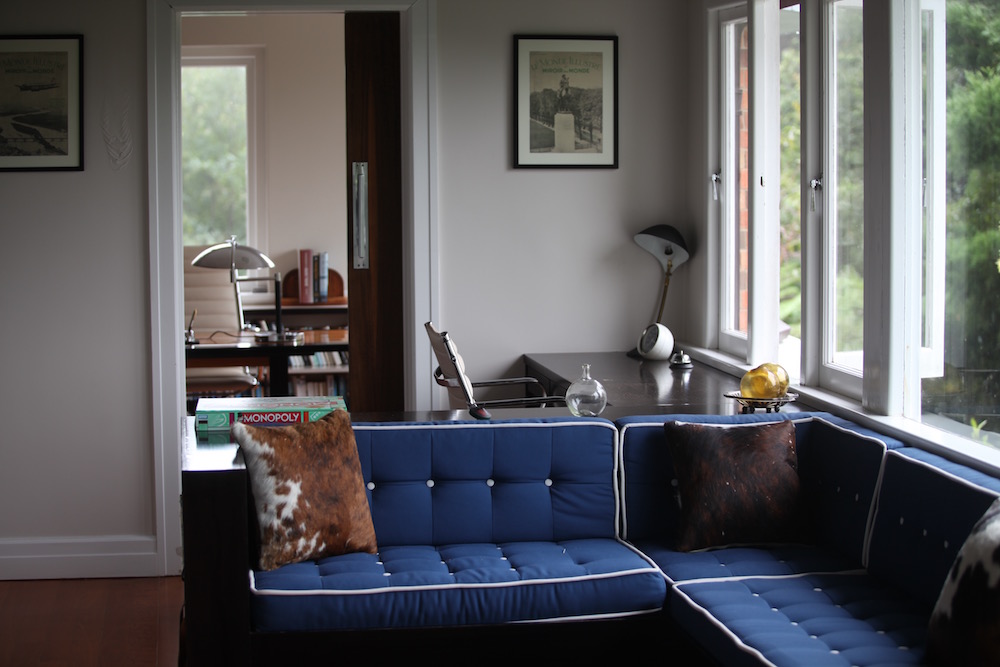
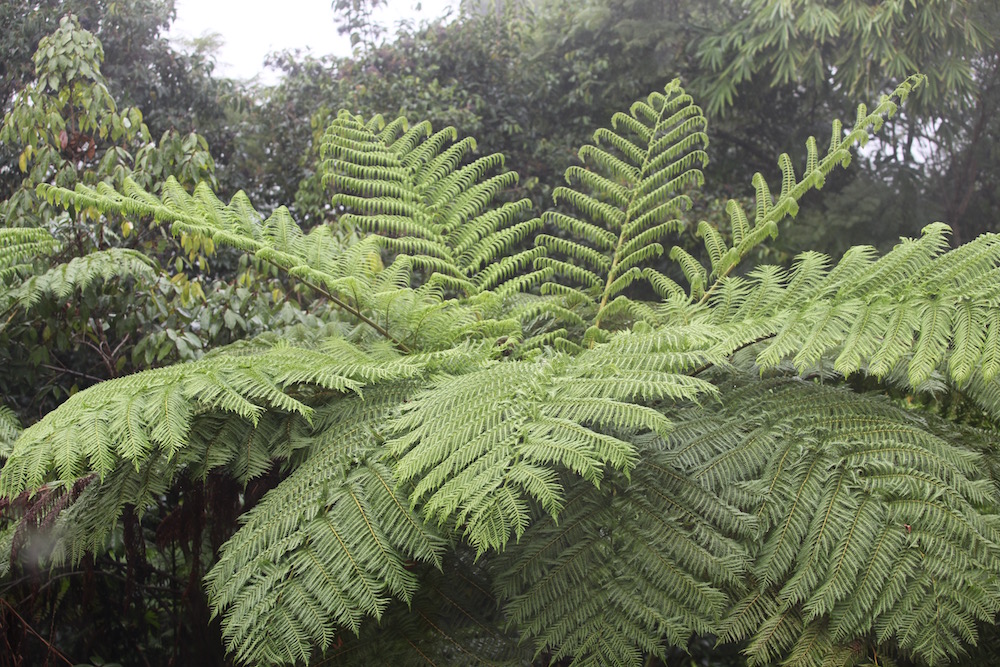
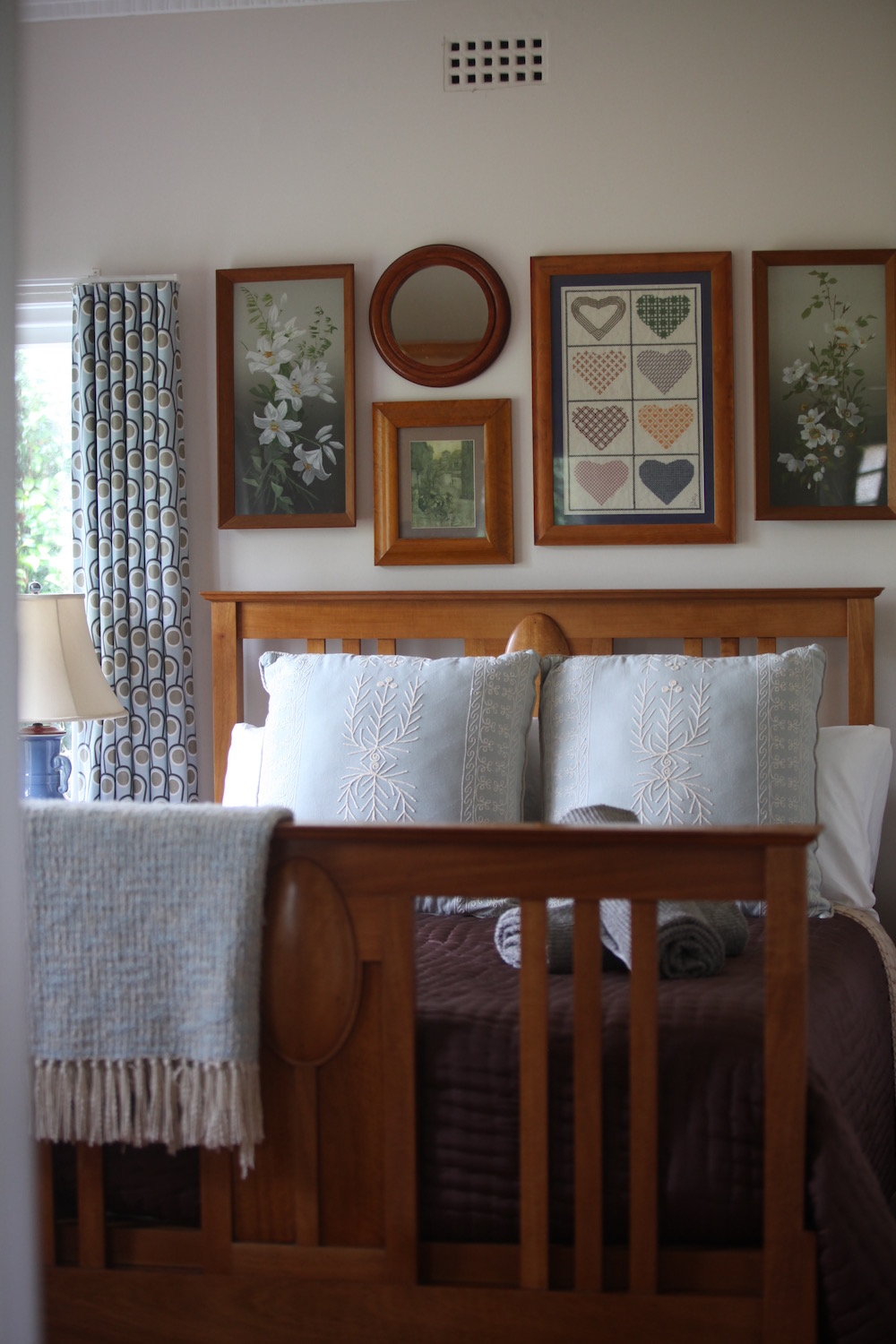
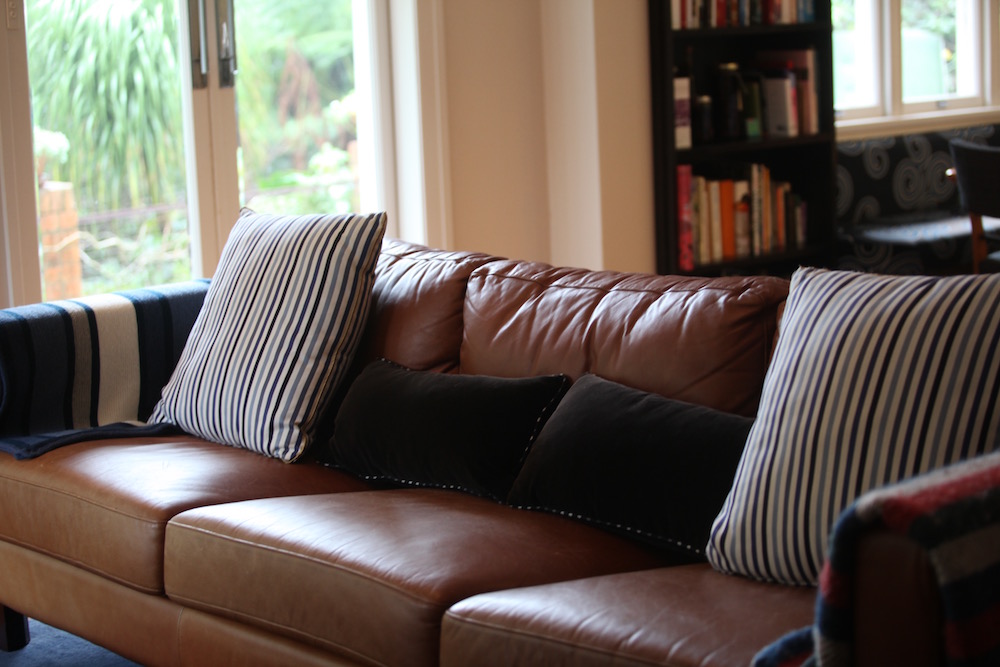
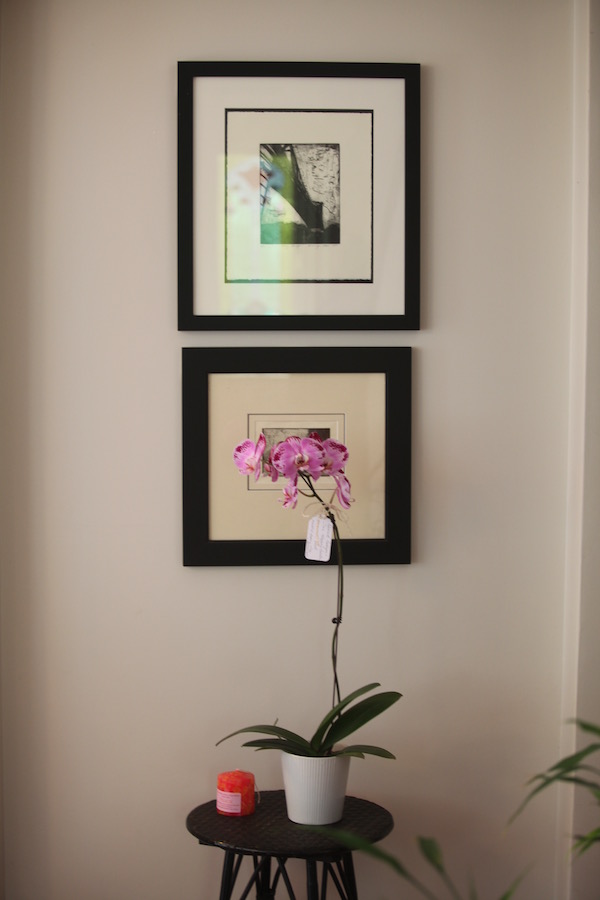
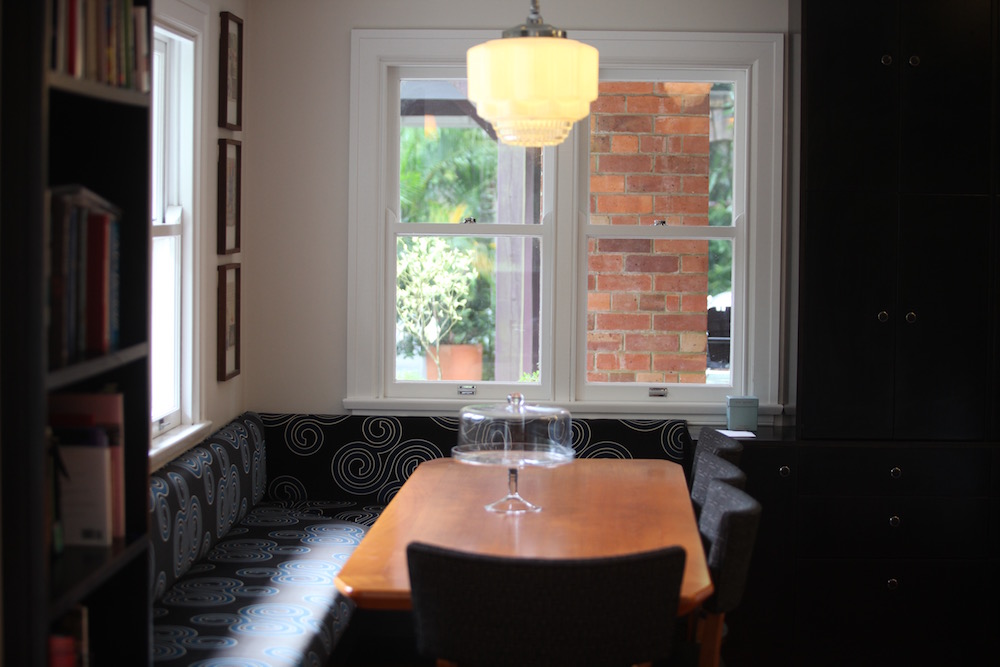
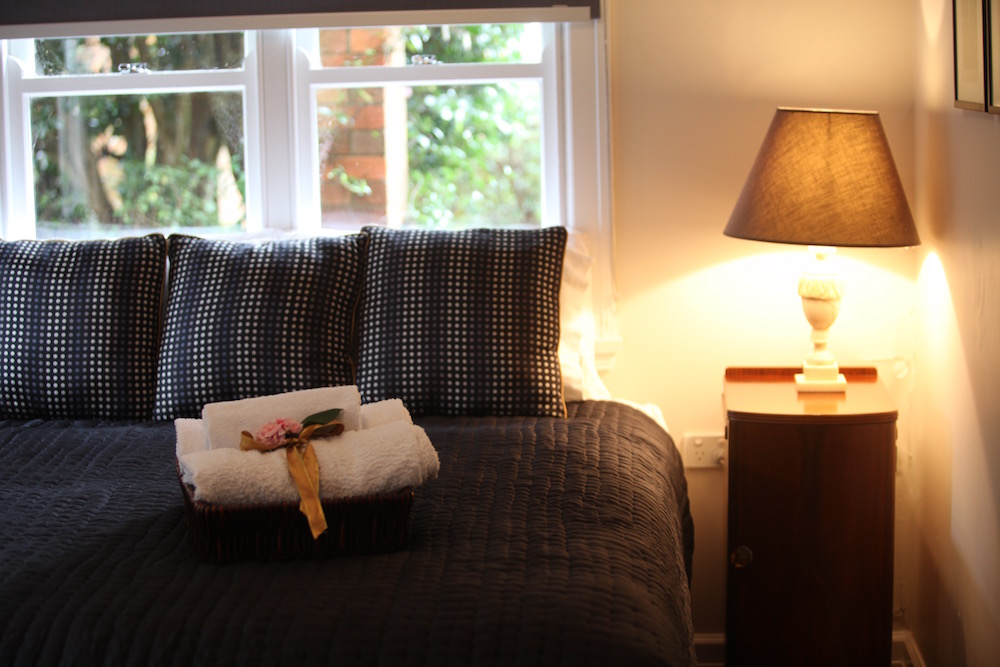
Images from Villa Margaret
To contact Fiona Porteous at The Old Blacksmith’s Cottage go to: www.facebook.com/theoldblacksmithscottage/
For more information on Villa Margaret go to: villamargaret.com.au/
The post Tranquility plus on Tamborine Mountain appeared first on .
]]>The post 75 – and she’s still tall in the saddle appeared first on .
]]>I feel a bit ashamed of myself to be honest. I think it was about four years ago, in my late fifties, when I began to complain a bit about a slightly arthritic right hip that was preventing me from hopping on and off a horse in quite the style I’d been used to, and I started to talk about whether it was time to give up riding altogether.
But recently I met Janet Edgerton, and I have to say – I’ve been somewhat silent on the subject of riding, and ageing, because at the age of 75 (it was her birthday a few weeks ago), Janet is riding on a weekly basis, and not only that, but she came back to it after a 36-year-break.
I’m standing on the sidelines of the arena at the Byron Bay Equestrian Centre watching Janet and her fellow rider, Beeb Fleetwood, a mere 64, going through their paces on two of Tesse’s most precious horses. Beeb is on, Junior, a somewhat ironically named massive 16.3hh warmblood, and Janet is on Lucy, Tesse’s own personal Percheron.
As I watch, Janet urges Lucy into a canter, and Tesse is giving her encouragement. “Keep your leg on,” she urges, “don’t let her fall out – well done!”
I’m catching the end of the lesson and Beeb and Janet are going through their final paces. I’m impressed, not least because I suspect I wouldn’t last 20 minutes without gasping for breath, but afterwards when I talk to Janet about her late re-entry into her best-loved hobby, I’m not surprised at how fit she is. “I ride every week,” she tells me, “but I also ride my bike, do a one-kilometre swim a couple of times a week, and play badminton twice a week, so I’m pretty healthy and fit.”
Pretty healthy and fit doesn’t even begin to cover it really – but I do wonder why Janet came back to riding after so many years away from it.
“I grew up in England with horses,” she says, “we were into hunting and showjumping, and I competed until I was in my twenties, and rode until I was 37. But then I met my husband over in the UK, who was Australian, and we had three children, all of them born over there, and life just simply got too busy. He was keen that we try living in Australia and so we moved here in 1984.”
At first Janet wasn’t sure if Australia was for her. “It took me about a year to settle in,” she says, “it was so different. We settled up near Pottsville, but somehow life was so busy there never seemed to be time to ride or get into it properly. It wasn’t until a couple of years ago that I was talking with Beeb about her lesson down here, and she suggested that I come along.”
Janet took her time – checking out the centre, and watching a couple of lessons, until in March last year, she had her first half-hour lesson. “I took to it like a duck to water,” she said. “I do think it’s a bit like riding a bike – you never forget. Now it’s a highlight of my week and I really look forward to coming down and sharing my lesson with Beeb.”
Beeb Fleetwood, Janet’s lesson partner, also came from a horse background. Beeb grew up on a farm in Western Victoria, and like many kids do, started off small. “I learnt to ride on a Shetland pony, as you do,” she laughs, “and I progressed through Pony Club and onto bigger ponies and horses. I continued to ride intermittently on the farm into my teens and twenties, and then when I was older started doing some trail riding in the High Country which I really loved. Later on I did a bit of Adult Riding Club, and I also used to have lessons, but for me it was always more about the trail.”
Despite her love of trail-riding though, what prompted Beeb to go to the Byron Bay Equestrian Centre was initially to ride with a friend of hers who was coming back to riding after a tragedy many years ago when her father had died after a fall from her horse. “I wanted to ride with this friend to keep her company,” she says, “but at the same time some friends of mine were beginning to go on these worldwide riding adventures and I really wanted to start doing some of them, but I’d always lacked a bit of confidence in my style of riding, so I decided that getting some lessons was a good way to improve my aides.” Beeb soon found a six-day ride in Sicily which she loved. On the ride, Beeb was in the saddle for six-eight hours a day, but thanks to her regular lessons she felt fit enough to handle it. “I loved it so much I’m going again,” she says. “I’m really hooked on the adventure of it.”
It was Tesse who suggested to Janet and Beeb (whose friend didn’t continue) that they have their lessons together and for both of them it’s been a rewarding experience.
And not just for them. “To see the pair of them so passionate about horses gives me something to look forward to,” says Tesse. “They’re literally my idols. When Janet first came she was walking on a horse for just five minutes, three or four months later I put her onto Lucy, my own horse, and the next moment she was thundering around the arena with the biggest smile on her face, and galloping as if she was on a hunt! She got severely reprimanded! But it was also very funny and entertaining. I’m so happy that her confidence has built up so much. Beeb had a lot of deep-seated issues with her parents telling her that she wasn’t good enough, and she’s physically improved out of sight. She has a beautiful natural seat and all the natural ability there – it was just teaching her that she had it, and she became an amazing rider.”
As for Janet, she’s got no plans to hang up her boots and spurs just yet. “I just feel that while I’m enjoying it, why not keep on doing it?” she says.
As I head home, I think of Elyne Mitchell, author of The Silver Brumby, who was still riding only a few years before she died at the age of 89. Time to put up or shut up I think to myself, after all, if I play my cards right, at the age of 62 I could have 20 years of riding left. Time to get going.
Photos: Candida Baker
To contact Tesse Ferguson, owner and manager of the Byron Bay Equestrian Centre go to: byronbayequestriancentre.com
The post 75 – and she’s still tall in the saddle appeared first on .
]]>The post Eternity Springs Eternal appeared first on .
]]>I’ve often wanted to live a hippy life in the hills around Nimbin for a few days – without, I’m ashamed to admit, renouncing my blow-dryer and other consumer durables. This longing has been amplified since I’ve had to become once more a victim of the military industrial complex – i.e. working in a city office between the hours of 8.30am to 5pm. So on a recent visit back to the Northern Rivers it was with keen anticipation that I booked a two night stay at Eternity Springs Art Farm – a bed and breakfast located between Nimbin and The Channon.
Eternity Springs is promoted as reflecting the ethos of the surrounding region, which has been historicised in popular memory so much that the connection between people and place, community and identity are so vivid they are globally recognised and nationally institutionalised. The Aquarius Festival held in Nimbin in 1973 is responsible for this connection when it irrevocably changed the landscape of the village, the hills that surround it and the nation when the counter-culture acted out the utopian dream. Happily, Eternity Springs didn’t disappoint on delivering a ‘morning of the earth’ communal living experience.
Turning into The Channon Road from Lismore begins a winding descent into what one might imagine as Tolkien’s Middle Earth – it’s the kind of landscape where you wouldn’t be surprised to spot a hobbit, wizard or other ethereal-type creature scurrying past on business. The cloud covered Nightcap Ranges, which tower across the horizon, form the perfect backdrop to the emerald green valleys, which are dotted with creeks, waterfalls and forest. Eternity Springs itself is located on Tuntable Creek Road, a few kilometres past The Channon General Store.
The appeal of the B&B begins on arrival with the sweeping driveway leading up to the main house, which is shrouded with rainforest trees and set against valley views. I was greeted by Ziggy the dog, who bounded-up to my car and insisted on escorting me to meet my host, Amanda. Later, Ziggy would accompany me as I took a walk around the farm to explore the permaculture gardens, orchards and the property’s very own waterfall and rock pool.
Eternity Springs features several accommodation options but if you thrive in ‘cookie cutter’ environments with high gloss finishes and generic furniture you may feel out of your comfort zone. There are five different accommodation options, which include the Gabi Rose Room, Cedar Room, Cubby Cabins, In-house and the entire Main House. I’m staying in the Cedar Room, which features panelled timber walls, leadlight windows and a super comfortable queen size bed. I had the
deepest sleep I’ve had for years in years in that bed, waking up early to a choir of frogs (there are 12 different species on the property), with various rainforest birds chiming in. The room also features a desk and chair, as well as a small library of books, with an appropriate selection of new age and spiritual titles. The room has its own ensuite with the bonus of a huge bath, and is located off the back verandah of the main house.
The verandah is where everyone meets to eat, chat and take in the rainforest valley views, either from the rambling wooden dining table, or from one of two hammocks that swing from the rafters. It gives you the opportunity to mingle with other guests, which for my stay included a group of inner-Sydney refugees, a couple from Tasmania who shared how they cured the husband’s melanoma using a natural remedy, and a mum with two children and the family dog in tow – pets are allowed on application.
Meals are freshly prepared and guests are welcomed to join in preparation. Dinner (by prior arrangement) includes fresh produce from the permaculture gardens and is served buffet style, featuring fresh salads, roasted vegetables and a variety of meats. The ham on the dinner menu (two pigs that had gone by the names of Pinky and Porky during their brief life) had been raised on the farm. Breakfast is complimentary and consists of fruit in season, homemade conserves, fresh bread, as well as free-range eggs straight from the chook house – perfect for lining one’s belly before setting off for the day to explore the region.
Eternity Springs is a great launching pad to the surrounding area. Nimbin is 15kms down the road and the drive takes in some stunning back-country. On the second Sunday of the month the legendary Channon Art and Craft Market is held on the village green. The World Heritage listed Protestors Falls, named after the Terania Creek protests of the late 1970s, is a 20km drive away via The Channon. However, for this visit I was content to stick to the farm – spending a few hours lolling in the rock pool under the waterfall and exploring the permaculture kitchen gardens and orchards, all of which provide living examples of sustainable landscape design.
It all adds up to allowing guests to have an ‘Age of Aquarius’’ experience – something that Amanda was aimiong for when she opened her farm up as a B&B. “The intention remains to share my utopia by providing a beautiful inspiring place for people to tune into themselves via nature and tune out from busy lives and demands of the world,” she says. “There are people who have come back so many times over the years, they’ve have become friends.”
And just like other Eternity Springs guests – I’ll be back.
Eternity Springs is located at 483 Tuntable Creek Road, The Channon. For bookings call 02 6688 6385 or visit https://eternitysprings.com/. Note there is a minimum two night stay. Eternity Springs can also be hired out for retreats and functions.
Georgina Bible stayed at Eternity Springs as a guest.
The post Eternity Springs Eternal appeared first on .
]]>The post Koalas at the Castle and all’s well with the world… appeared first on .
]]>“Over the past year or two the most requested addition to our animal park were koalas,” said Gilding today, while he watched River, the first koala into the new enclosure, settling herself down to a big old feast of fresh new gumtree tips brought in that morning from Lismore.
“We’ve been working with the Friends of the Koala in Lismore,” Gilding said. “They already have the gumleaves we need growing for the local koalas, and so we have a constant supply for River and Eliza.”
And boy, will they need a constant supply – approximately 200kgs a week according to Gilding’s reckoning. But trailor loads of gumleaves is a small price to pay for the permanent addition of the koalas, who recently made the journey from Taronga Zoo to the Macadamia Castle, as part of the Castle’s long-term direction to increase the native wildlife component of the Castle.
“The sad fact is that koalas are under serious threat in the Northern Rivers,” Gilding said while we waited for Eliza to make her appearance. “Their habitat is under constant threat, and we want to see the Castle play a part in educating locals as well as visitors about the importance of protecting such an important Australian icon.”
It wasn’t a long wait until the keepers reappeared with another massive travelling box, and after the member for Ballina, Tamara Smith, had done the honours, the door was opened, and within a few minutes Eliza took her first somewhat shy steps into her new abode. It wasn’t long, though, before she was literally, a koala up a gumtree, and even though she and River were well acquainted at Taronga, a few exciting moments ensued while we were treated to them shrieking at each other like banshees and for an animal better known for its sleeping ability, a remarkable display of koala martial arts. In fact, I had no idea that koalas could be so lively for so long.
There’s another great initiative at the Castle too which is attracting attention – the brand-new ‘lodge’ – a self-contained cottage which can sleep a family of six. Situated right next to the animal park, the rate includes park entry which means that families can go in and out as many times as they like. Perfect family entertainment.
For more information on the Macadamia Castle go to: macadamiacastle
For more information on the accommodation go to: https://airbnb.com/rooms
The post Koalas at the Castle and all’s well with the world… appeared first on .
]]>The post Julian Rocks – Byron Bay’s underwater playground appeared first on .
]]>I am a reasonably strong swimmer so the thought of snorkelling off Julian Rocks, a world famous scuba diving location, several kilometres off the coast of Australia’s most Easterly point, Byron Bay, didn’t hold a lot of trepidation for me. Although I must admit that way back in the deepest recesses of my elderly brain lurked the knowledge that many years ago one of the dive boats that visited this site suffered the worst possible dive-boat nightmare…the loss of one of its customers to a huge white pointer shark.
I surf these waters regularly and I’ve seen a number of large supposed “man-eater” sharks but I’ve never been harassed by a single one. Additionally, I know that thousands of divers and snorkelers over several decades have taken the short trip to The Rocks and that one terrible loss has never been duplicated. As such, my miniscule spark of fear was hardly likely to grow. The trip was to be an adventure, that’s for sure, but not, I reasoned, an adventure that carried a huge element of risk.
I arrived at the Sun Dive base at 10.15 am as requested and was quickly fitted out with a decent full length wet suit, a pair of fins, goggles and a snorkel. I was then introduced to the boat captain, Chris Barstow and the dive instructor, Gaye Ingham, who would be leading the morning’s dive. A short briefing followed where the twenty odd participants in the dive were given information on where the dive would take place (the layout of the Rocks and its various underwater physical features), what they would be likely to see and given critical information about safety procedures that everyone was expected to observe. Most of those on-board were qualified scuba divers who would be taking in the underwater views from the bottom of the ocean while two others, along with me, would be bobbing around on the surface taking the snorkelling option. We were then loaded onto a minibus and transported to the launch location at The Pass, Byron Bay.
On a day when The Pass is offering up a bit of decent swell, the launch itself would be part of the morning’s adventure as the inflatable dive boat has to take on its passengers then negotiate a couple of hundred meters of heaving and churning breaking waves while avoiding the dozens of ever-present recalcitrant surfers who refuse to get out of the way. Unfortunately for us, or fortunately if you don’t like the idea of riding a rubber dive boat through breaking swells, the ocean was close to dead flat on this morning so the launch process was uneventful and not remotely exciting. Oh well. A bit of a rough ride might have been fun but the sun was shining, the air was cool, the wind was a gentle zephyr from the west and the ocean itself looked crystal clear and inviting.
Sometimes the tiniest little things turn out to be a delight when you’re doing something you haven’t done before. The thought that peering back at your hometown from kilometres out to sea might be really cool had never occurred to me before. But here I was in the open ocean speeding across deep ocean swells looking back at the array of Byron Bay beaches, the Eastern Cape, the town itself and the lighthouse and the feeling was deeply pleasurable.
On arriving at Julian Rocks the skipper navigated the craft around to the Northern side of the rocks where our dive would be protected from the prevailing ocean swells. The scuba divers were briefed by their dive leader and, one-by-one, took to the water. My snorkelling companions and I were briefed by boat captain, Chris, who assured us that we had picked a perfect day for a snorkel and then advised us of the different places we might wish to swim (to optimise the amount of sea life we would experience), the procedures we should follow if we needed any assistance and information about where he would be picking us up at the end of our dive. He told us that he would be carefully watching us all the time and that if we experienced any difficulty we should signal to him immediately to come and get us.
Then we were overboard! Seeing the ocean floor ten meters below is quite a shock. As the bubbles from entering the water cleared from around my goggles I was immediately aware of being surrounded by dozens of colourful fish of all shapes and sizes flying here and there in their shadowy blue liquid. I followed Chris’s instruction to swim in towards the rocks where the water is a little shallower and where the wild life clusters around the reefs and inlets that are part of the Julian Rocks structure.
Despite my pre-trip thinking that a snorkelling trip to Julian Rocks would hold no fears now that I was actually in the water and exploring a new and unfamiliar world I was not as calm as I expected to be. My snorkelling companions, being a couple, were more than happy to drift off by themselves. All of the divers had disappeared into the deep water long ago. The boat captain was sitting in the sun on the dive boat moored some fifty meters away. Call me chicken. But being by myself, I was nervous.
Nervous or not though, I wouldn’t have missed the experience for quids. Blue groper with their puffy electric blue lips nibbled away at the rock walls. Coral of many colours, shapes and sizes grew out from rocky underwater walls. Yellow fish, grey fish, multi-coloured fish… some darting about… some feeding on the bottom… some seemingly just having a leisurely swim… and some purposefully intent on some unknown fishy business were everywhere. Puffer fish the size of basketballs slobbed around confidently in almost every underwater canyon I discovered.
As I swam between two reefs I saw the shape of two beautiful leopard sharks with their heads disappearing into an underwater cave. Excited by the discovery I decided to go looking for my snorkelling companions. I found them near an inlet thirty meters or so further down the rock wall. Before I got the opportunity to show them my leopard sharks they wanted me to check out their discovery. Resting on the sandy bottom in around three meters of water was a huge sandy and dusky coloured Wobbegong shark. My initial thought was to dive down and touch the creature on the back. My second thought was that that would not only be a crass thing to do but it would also be unwise. While Wobbegong are not a dangerous creature of the deep they are certainly willing to give a foolish interfering human a nasty nip if the human is ill-mannered. So I left the beautiful carpet-patterned animal to its sandy-bottom slumbering and escorted my companions to the leopard shark canyon.
I saw two large yellow-tailed, torpedo-shaped, King Fish (each around half a meter in length) swimming briskly in pursuit of a small school of fish. As I followed the predators over a reef into yet another deep, sandy, canyon the sight of the day loomed out of the darkness. A dark brown creature with a hawk-like face and with pink-white spots on its meter-wide dark wings soared out of the distant blue gloom and headed in my direction. When it saw an unwelcome human stranger in its path it elegantly banked to the right revealing the bright white underside of its wings and headed down the canyon and back out into the deeper water trailing an enormous long, thin and sharp tail behind it. Chris later explained to me that I had seen an Eagle Ray.
Everyone on board was thrilled by their sixty minutes in the water, and on the return journey rather than heading straight back for The Pass Chris took a bee-line for the Eastern Cape then slowly skirted Little Wategos and Wategos Beaches so that we could watch the local dolphins at play and the surfers catching waves from the less familiar ocean side view. In the bright sunshine and warm air Byron Bay observed from the sparkling clear ocean could not have looked more beautiful as we returned to our launching place.
Looking back on it, it’s simply remarkable to me that I could have lived so close to such an extraordinary place for so many years without ever having felt the need to go there. I must have been nuts. Julian Rocks is a must visit place for locals and visitors alike. I’ll certainly be going back.
Tim Edwards was a guest of Sun Dive, Byron Bay for this story.
Julian Rocks scuba experience provided was provided by Sun Dive, Byron Bay Contact: 1800 008 755 or 02 6685 7755. Website: www.sundive.com.au Email: [email protected]
The post Julian Rocks – Byron Bay’s underwater playground appeared first on .
]]>









